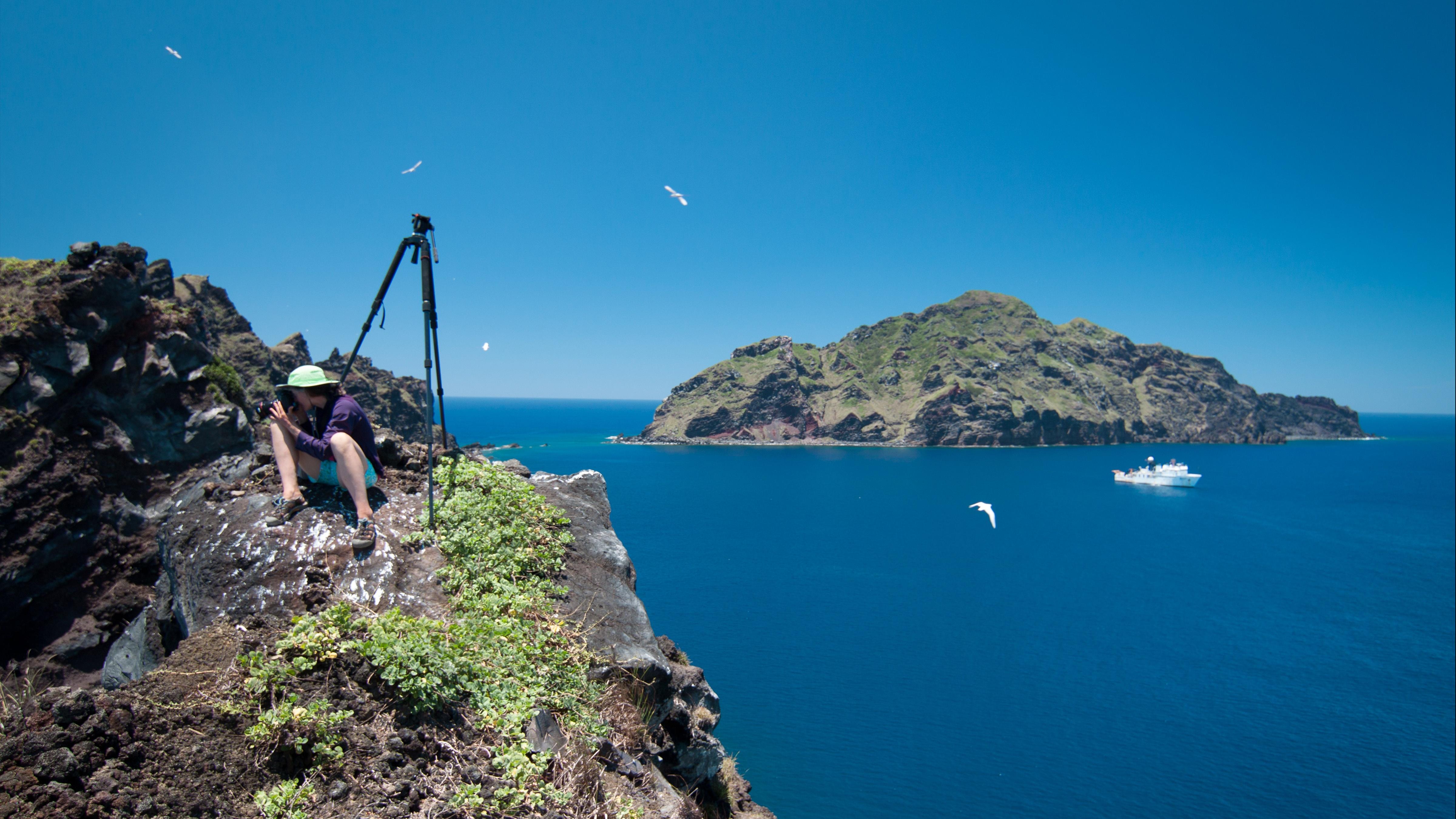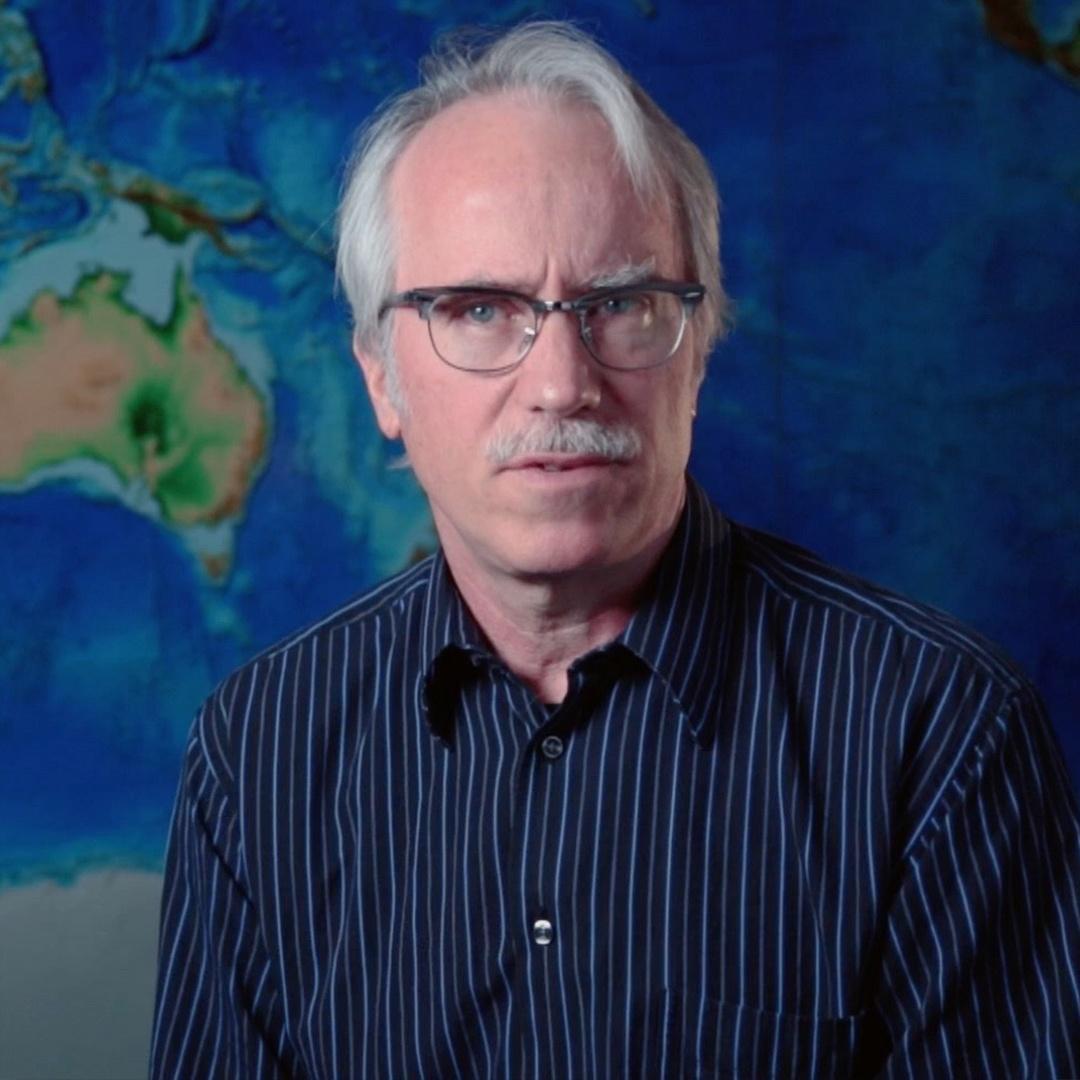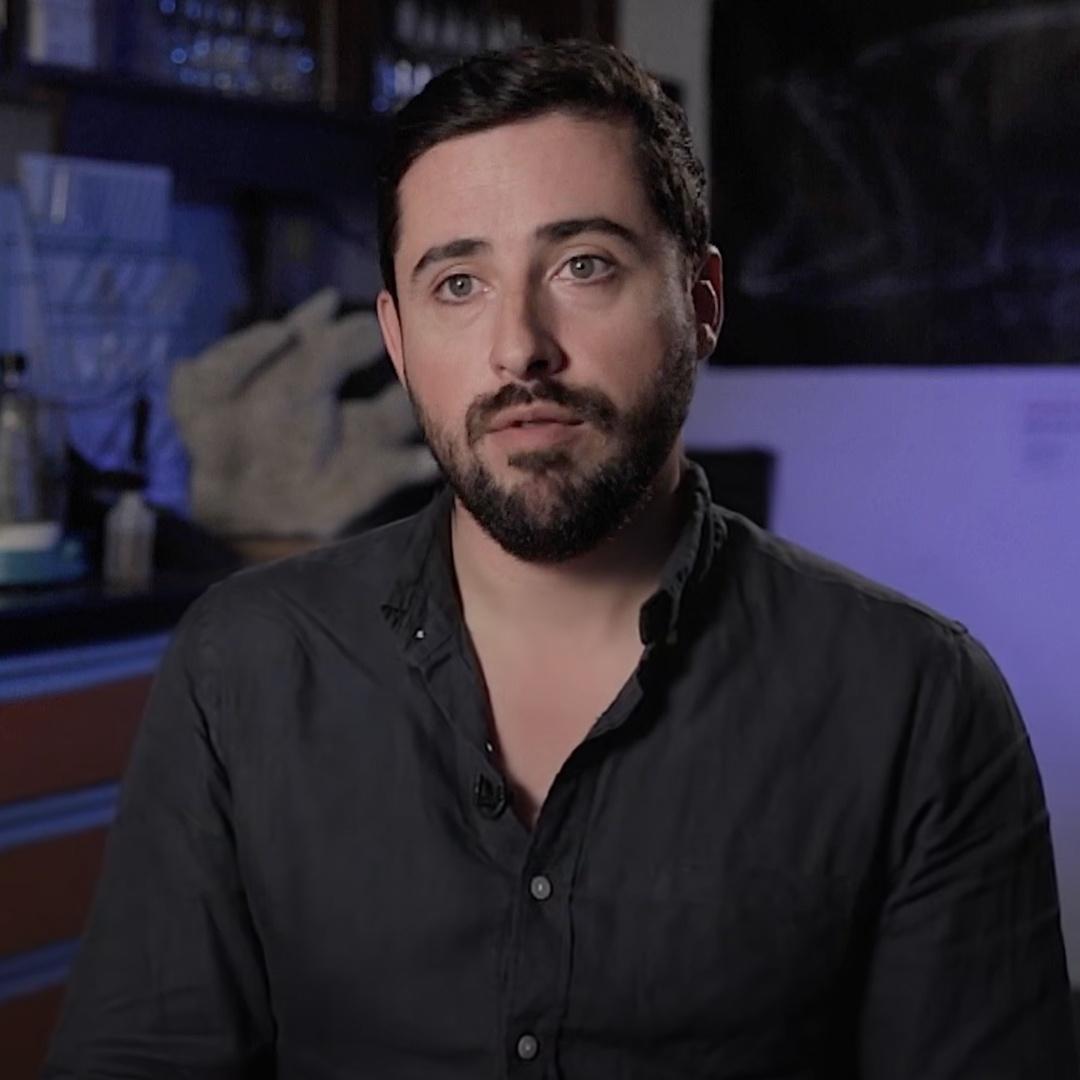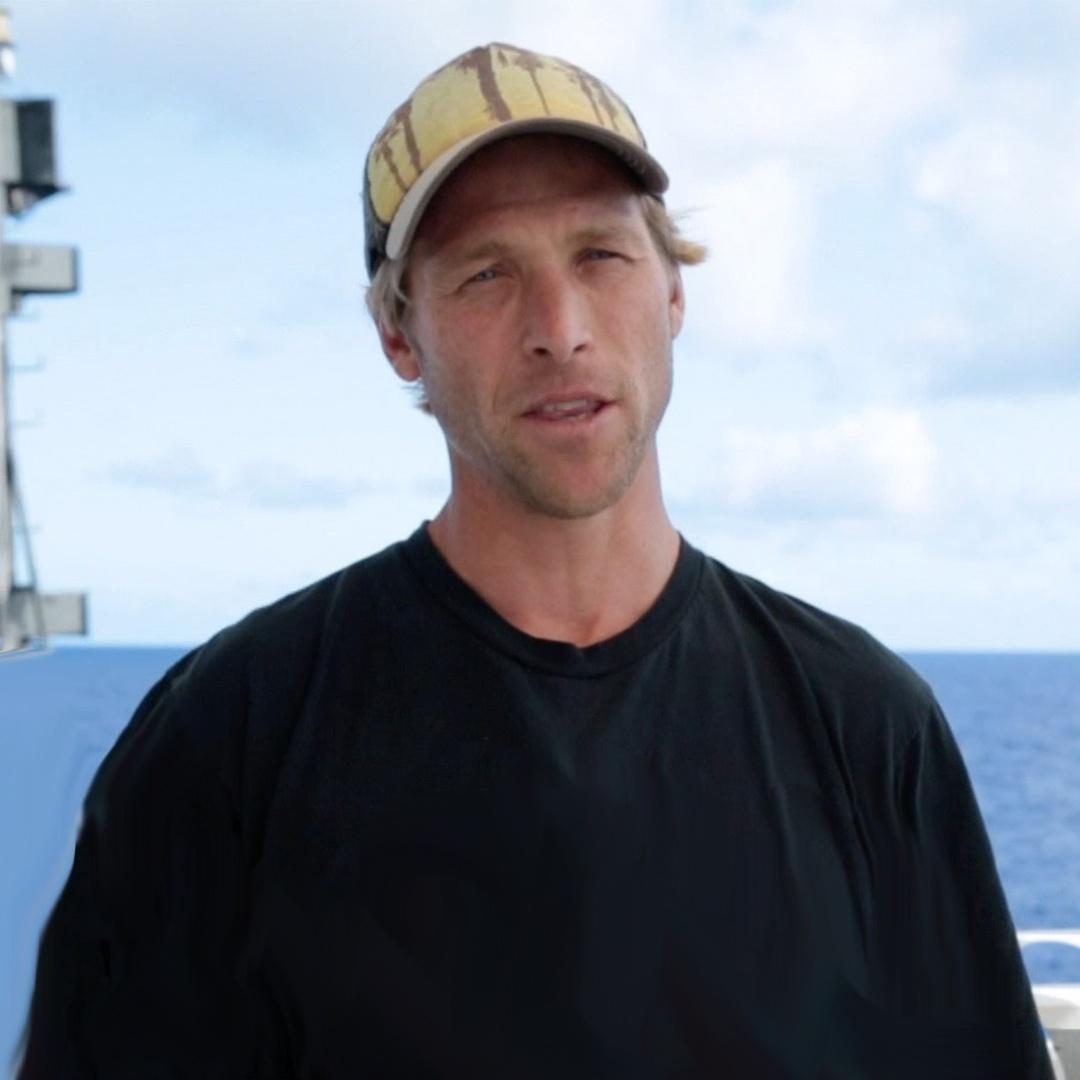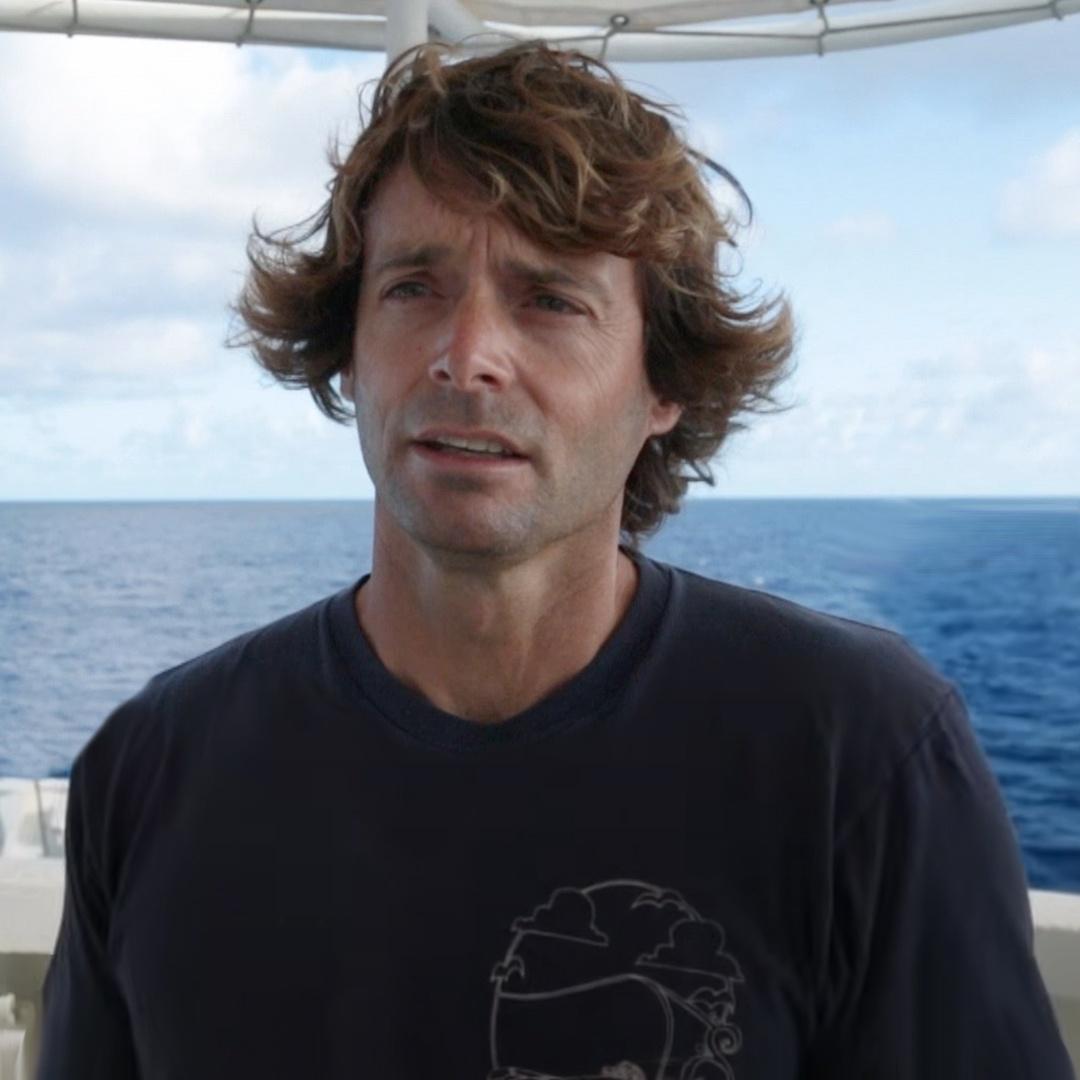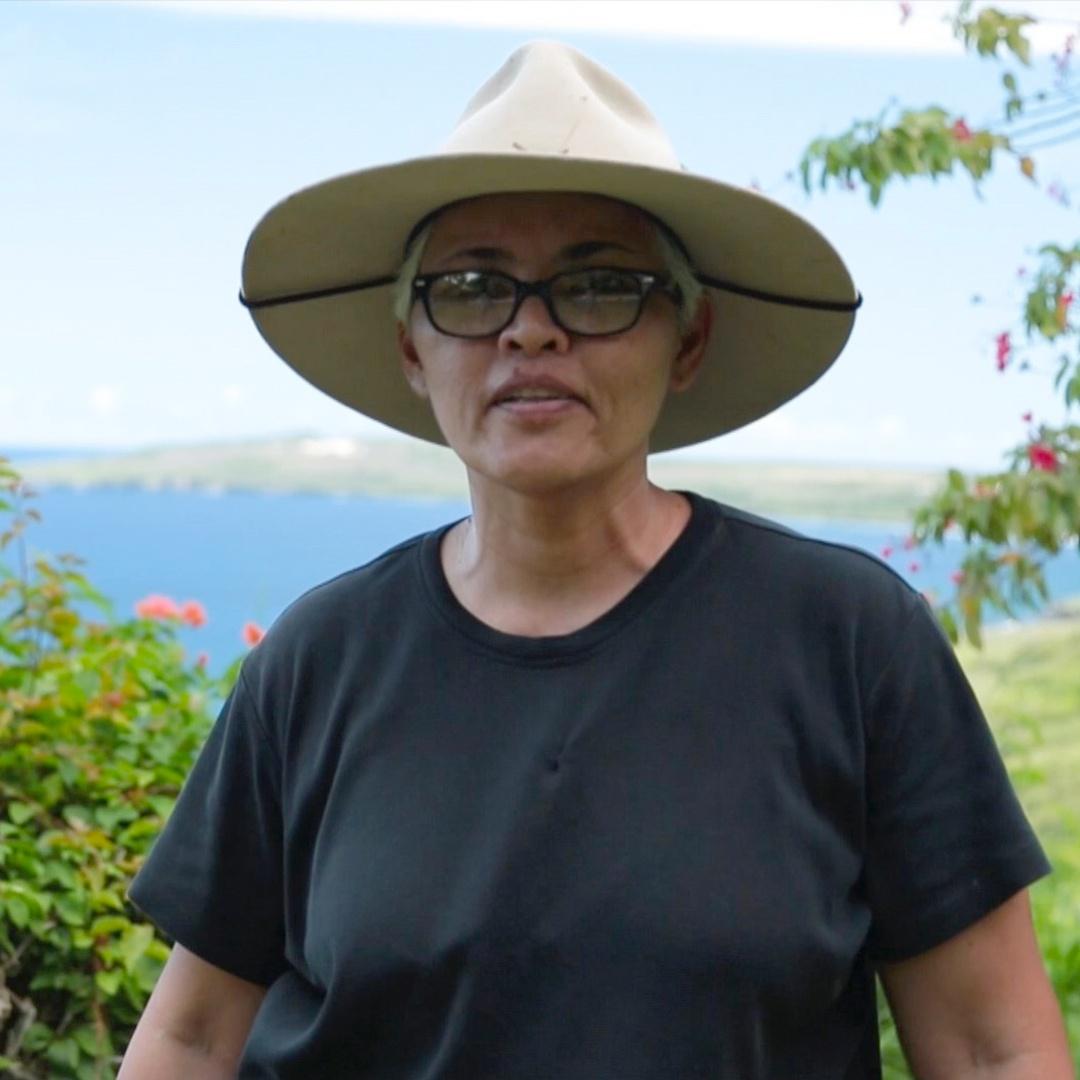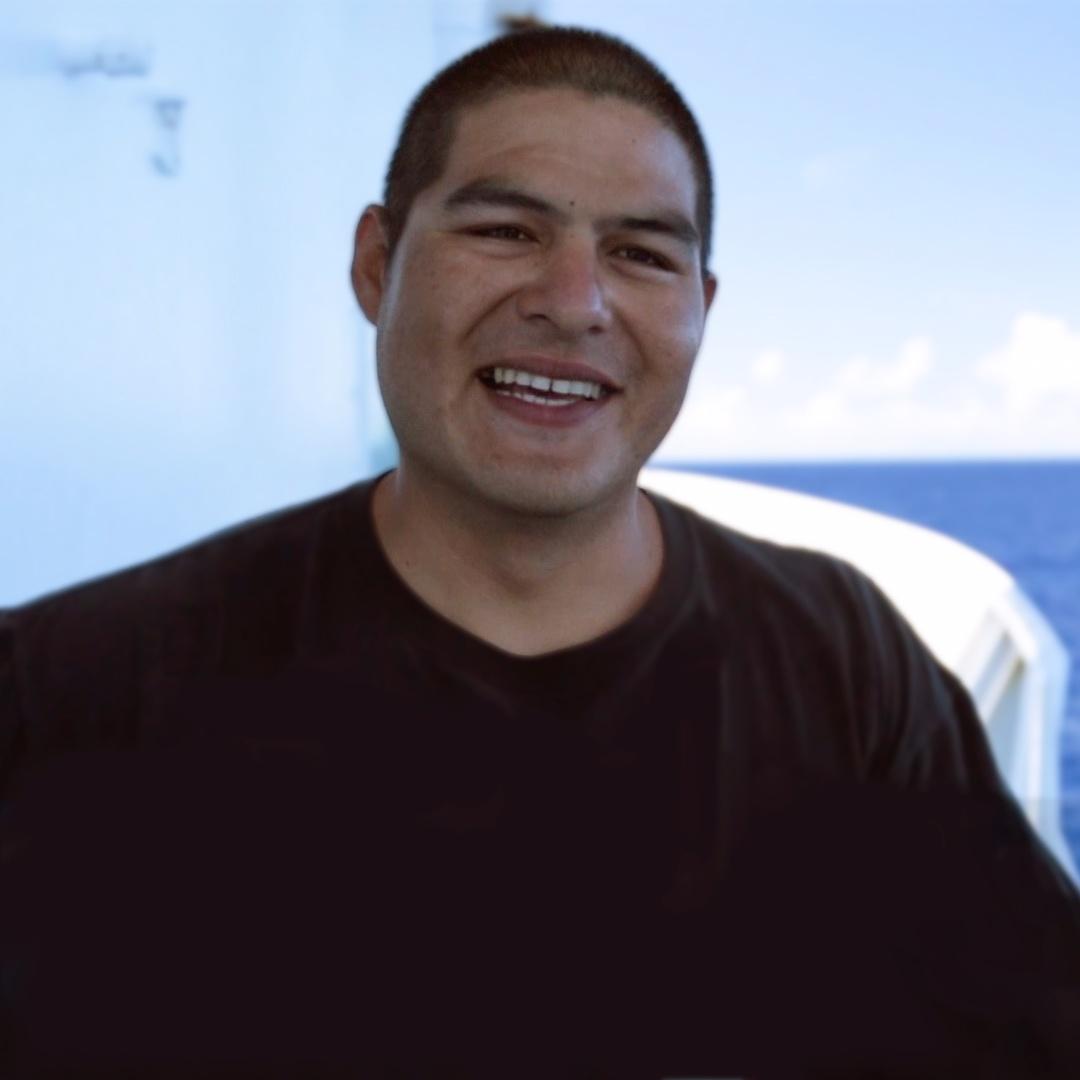Episode Photos
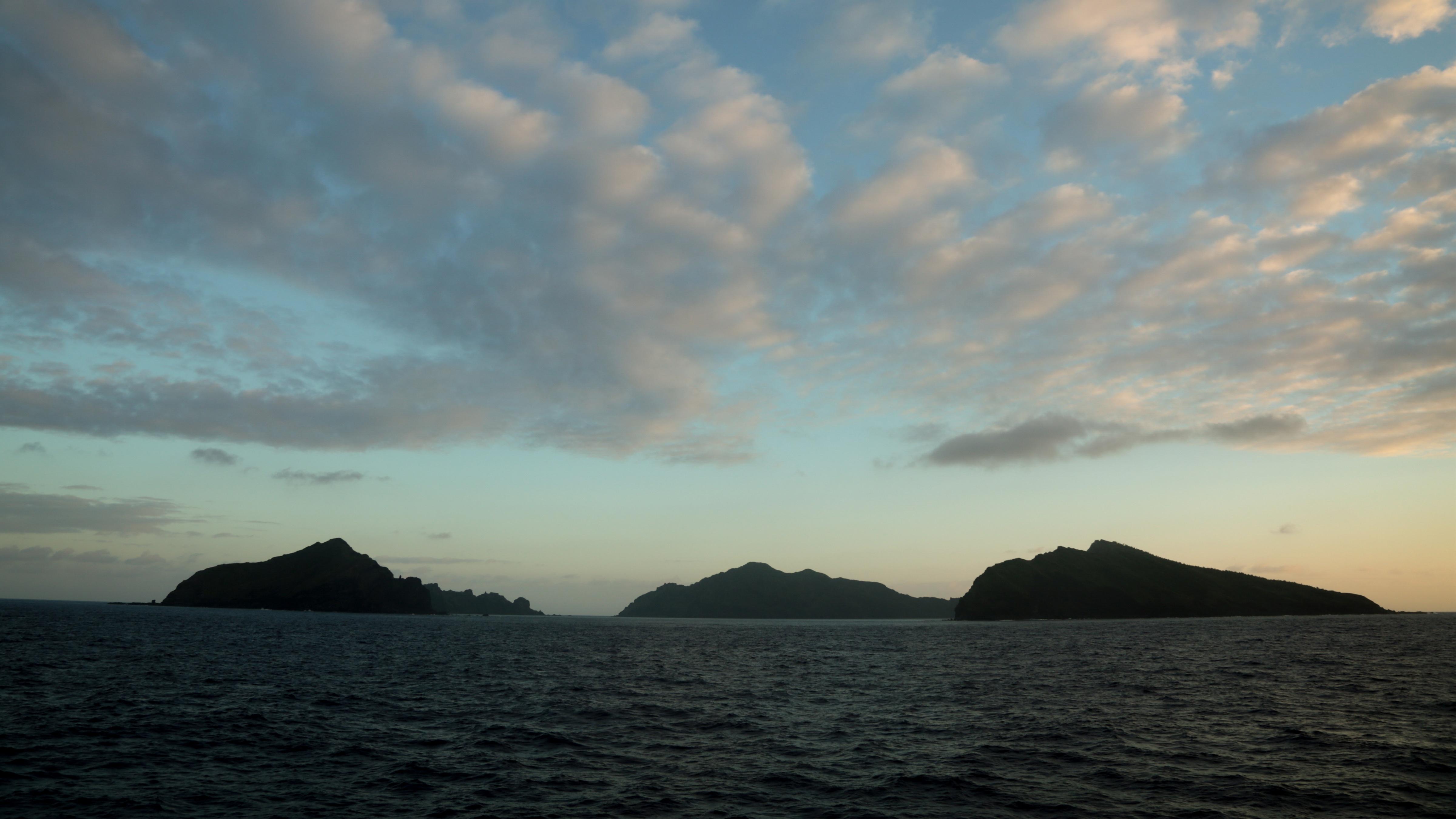
Stephani Gordon/Open Boat Films
The three islands of Maug, a remote caldera at the northern end of the Northern Marianas archipelago in the Pacific.
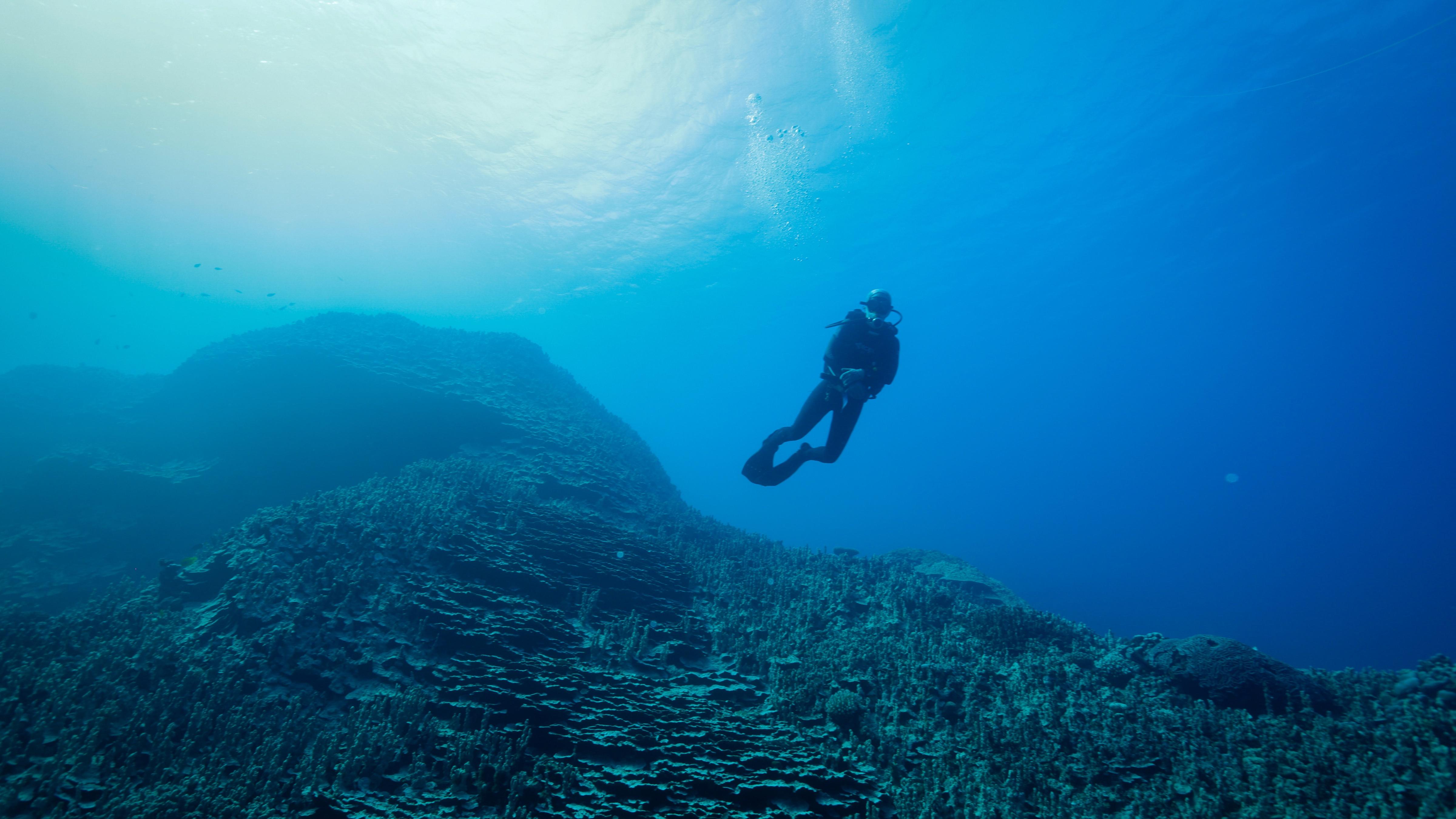
Stephani Gordon/Open Boat Films
Extensive coral colonies carpet the sea floor on much of Maug’s diverse habitats (NOAA diver Jeanette Clark.)

Stephani Gordon/Open Boat Films
Diver John Iguel from local research partner CNMI Bureau of Environmental & Coastal Quality sets up a device to measure coral fluorometry activity near a hydrothermal vent.

Stephani Gordon/Open Boat Films
One of the most exciting and unusual things about Maug is its hydrothermal vent system in very shallow water next to healthy coral reefs.
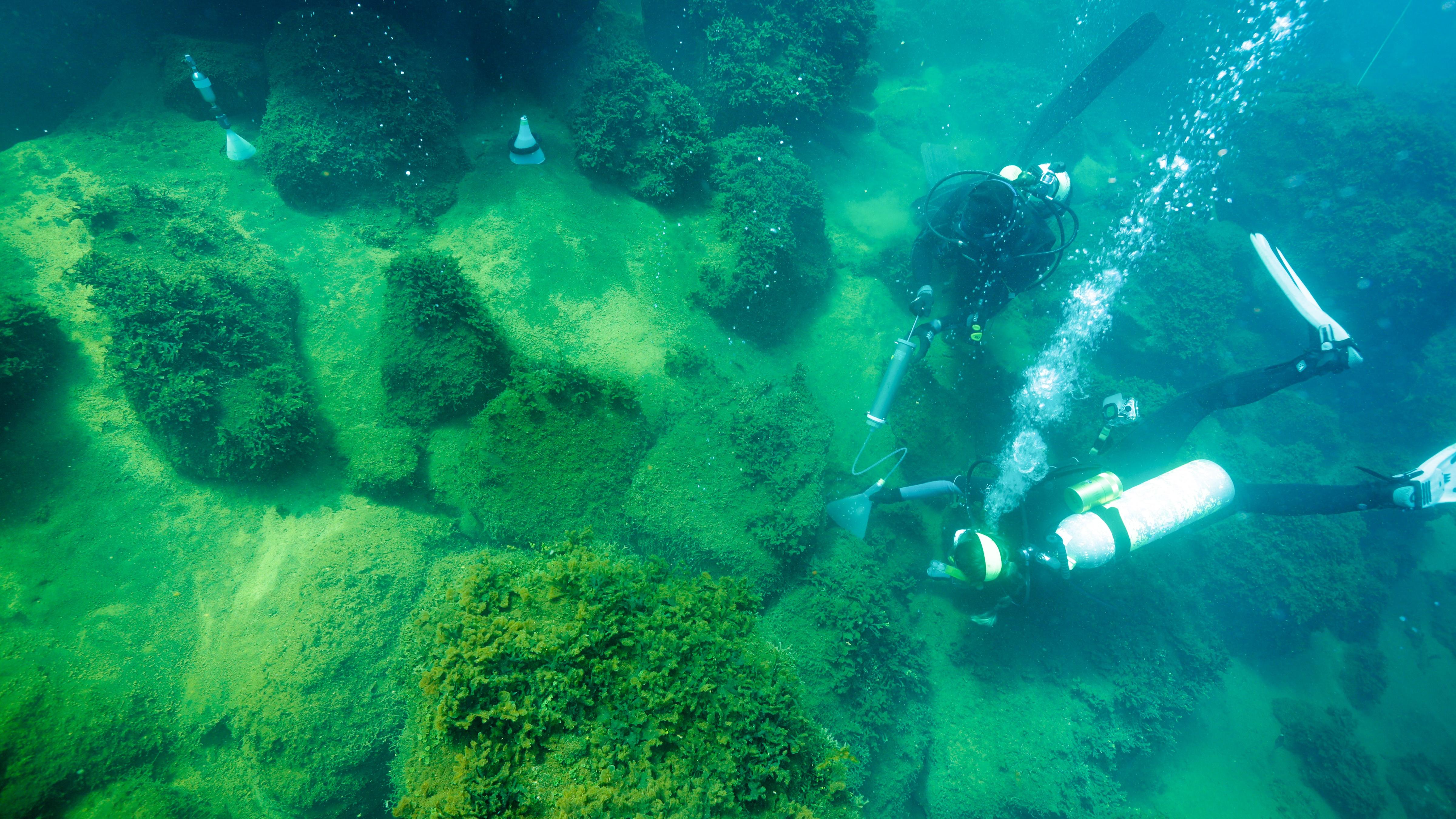
Stephani Gordon/Open Boat Films
Research divers collect vent bubbles for gas analysis (NOAA divers: Noah Pomeroy and Kerry Reardon.)
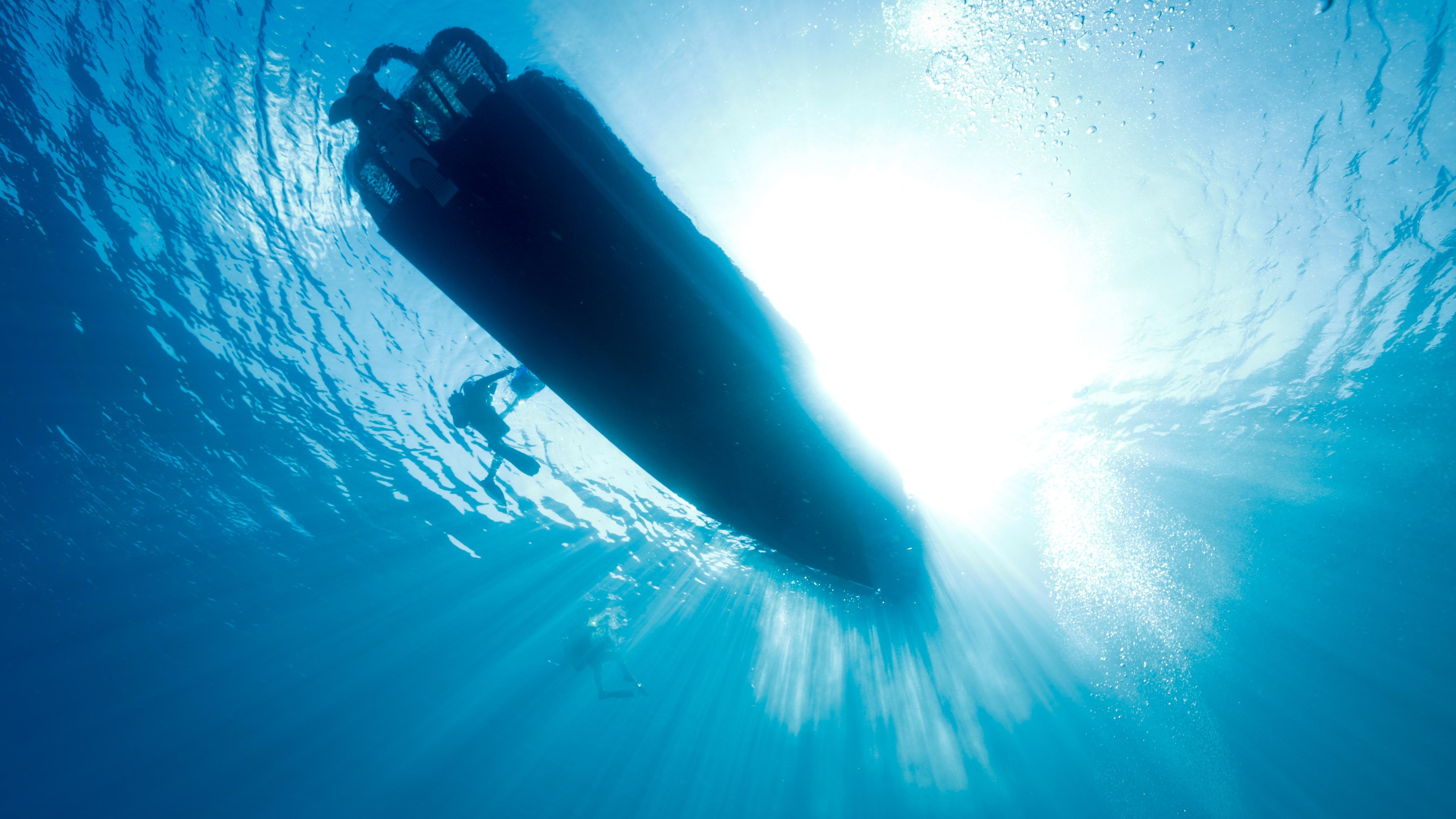
Stephani Gordon/Open Boat Films
A research diver enters the clear waters of Maug from a RHIB (rigid hull inflatable boat) launched off the larger NOAA ship.
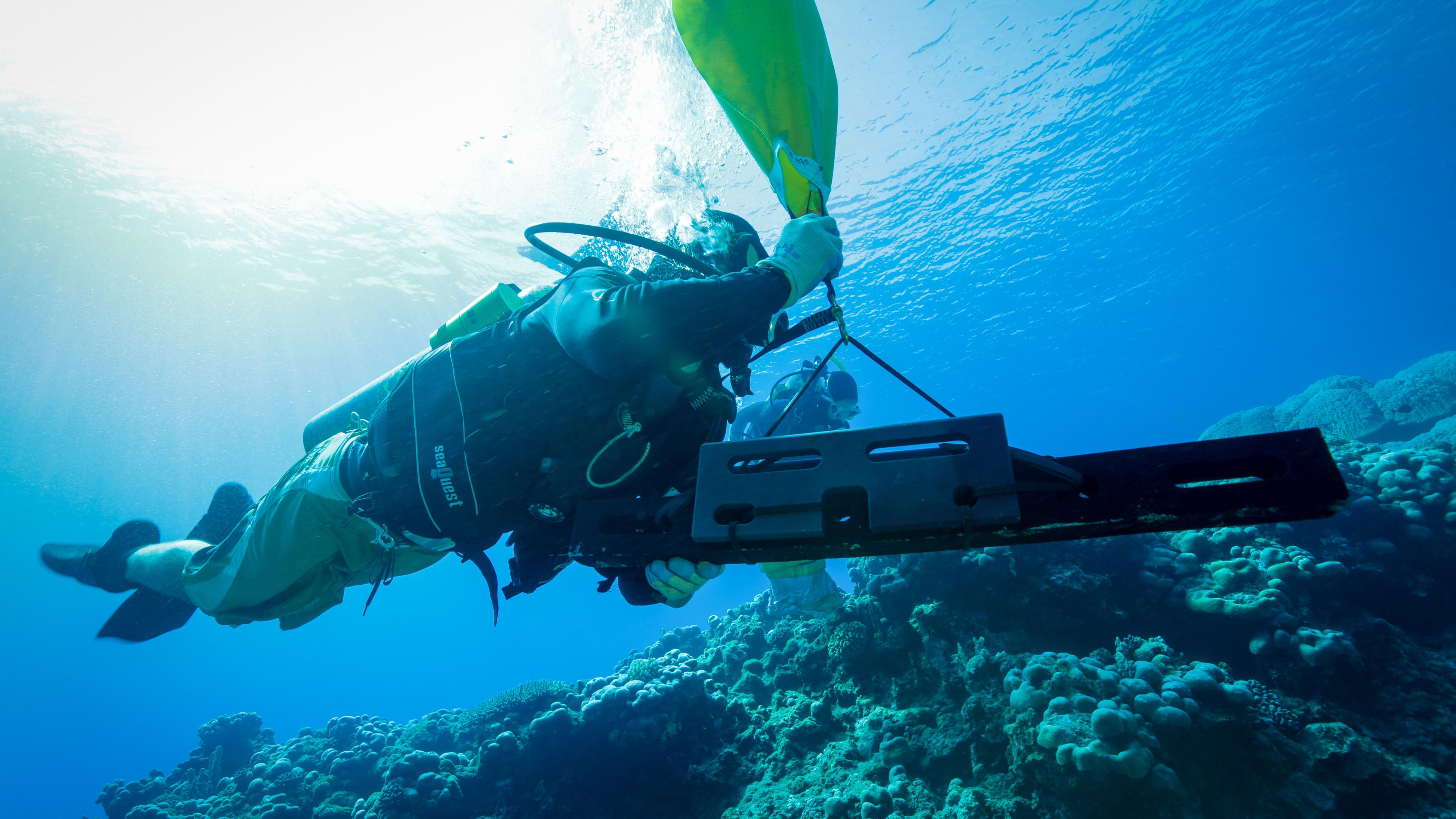
Stephani Gordon/Open Boat Films
Expedition Chief Scientist and Research Diver Chip Young swims with an oceanographic instrument suspended by a lift bag.
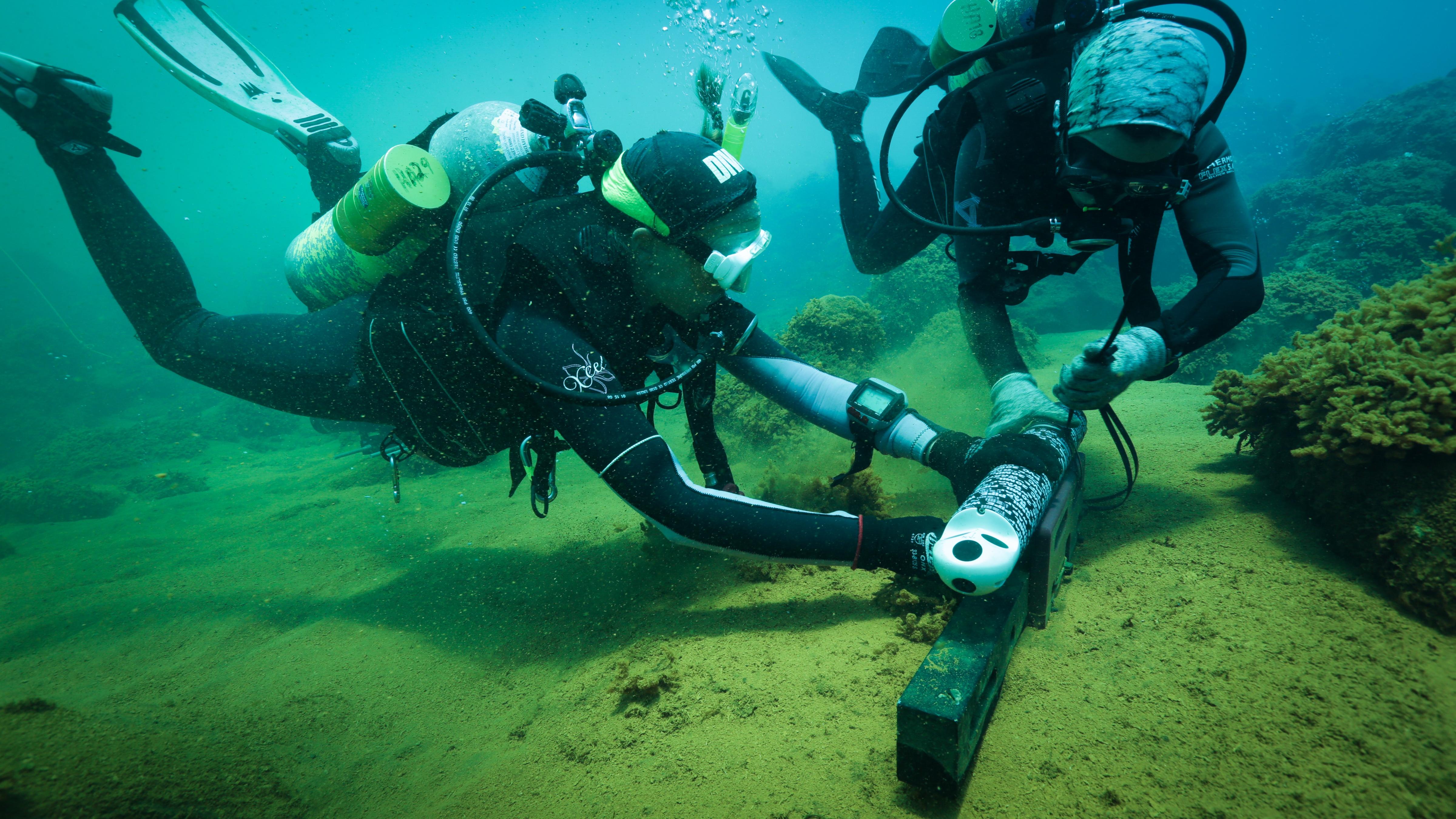
Stephani Gordon/Open Boat Films
Two divers install an oceanographic instrument near the vent site to measure temperature, salinity, and other parameters (NOAA divers Kerry Reardon and Jeanette Clark.)
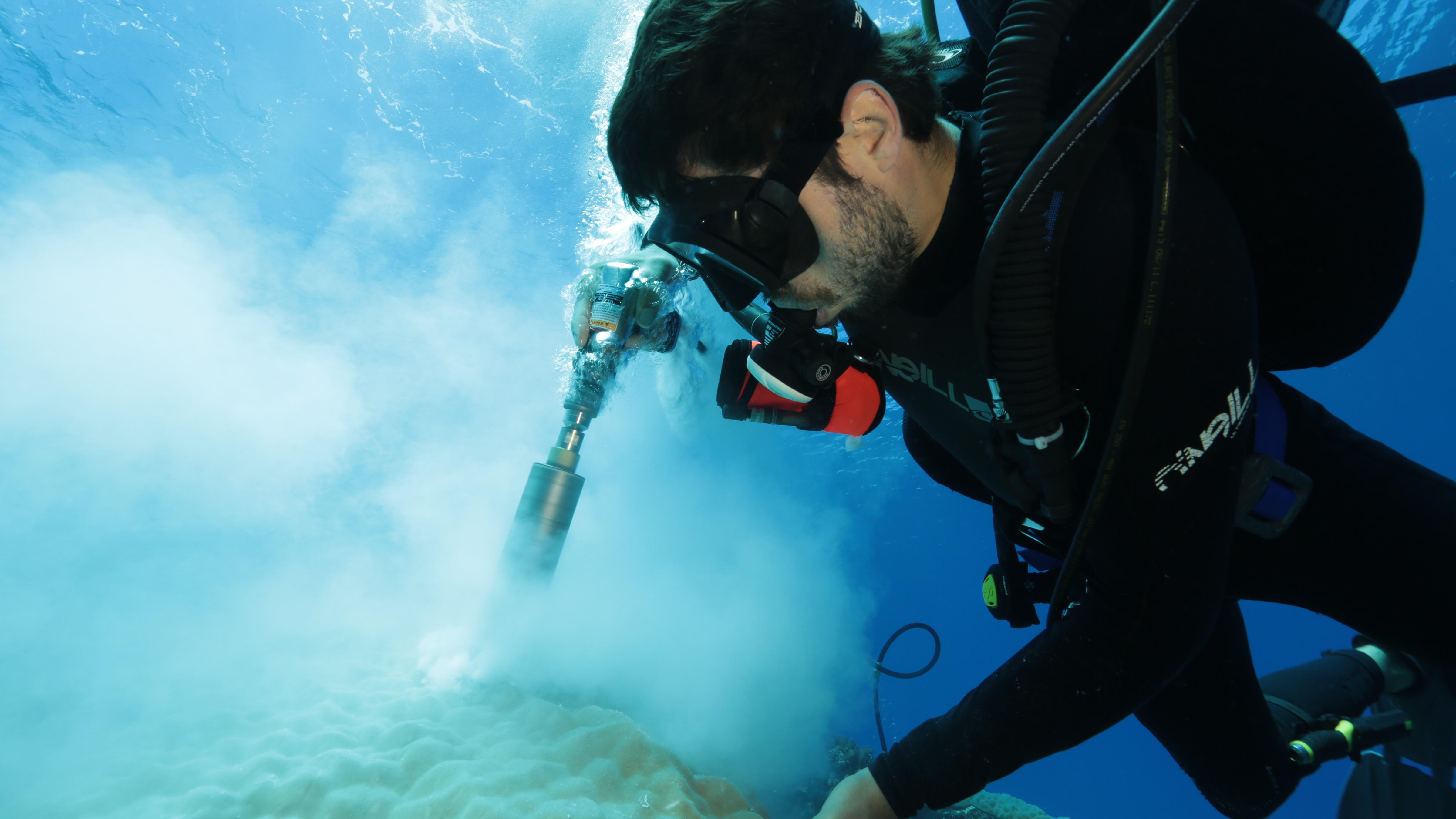
Stephani Gordon/Open Boat Films
Researcher Ian Enochs operates a pneumatic (air-powered) underwater drill to extract a core from a large coral colony in the clearer waters of the area outside the vent site.
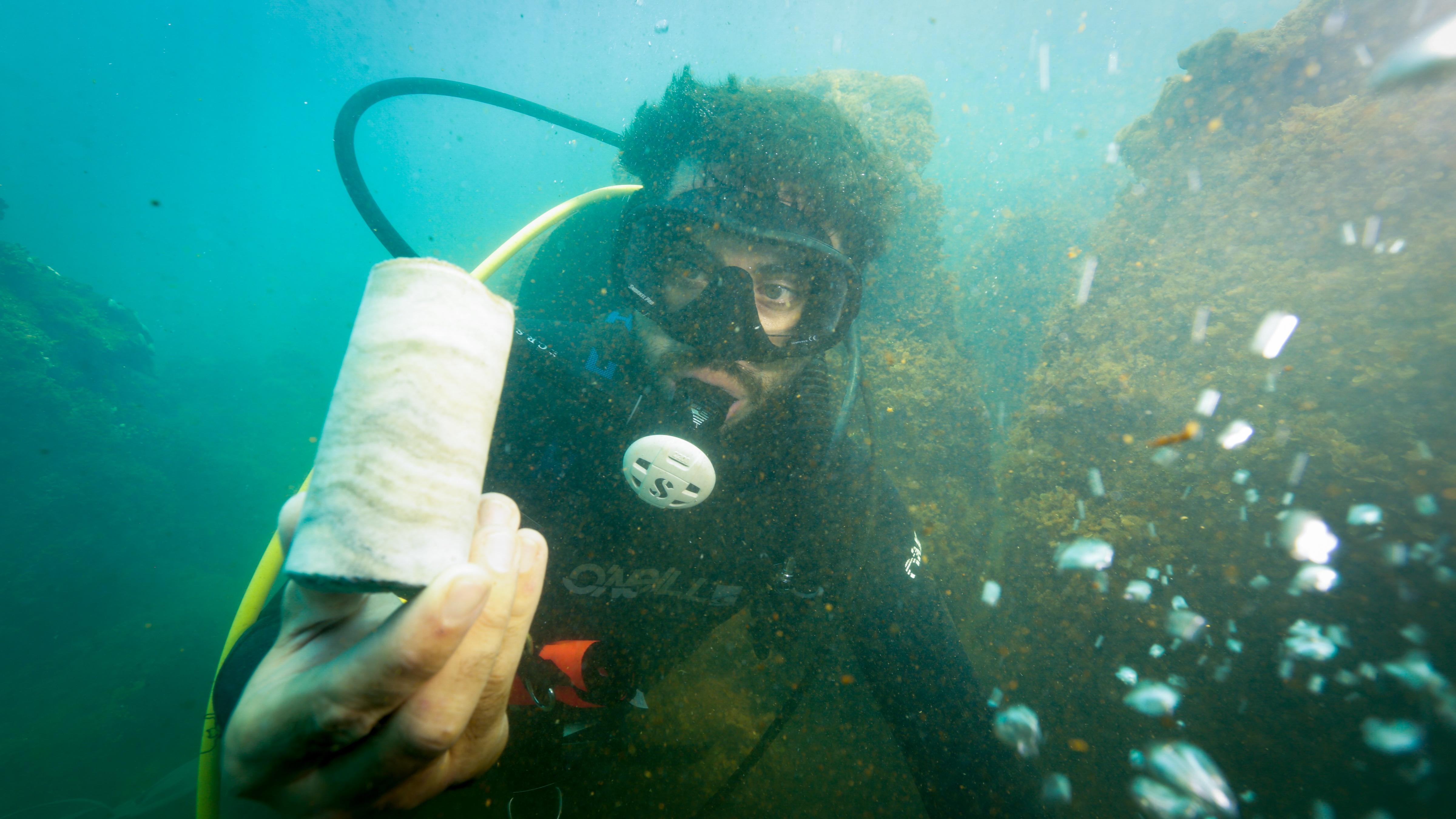
Stephani Gordon/Open Boat Films
A coral core extracted from a large colony at the vent site at Maug, held by researcher Ian Enochs.
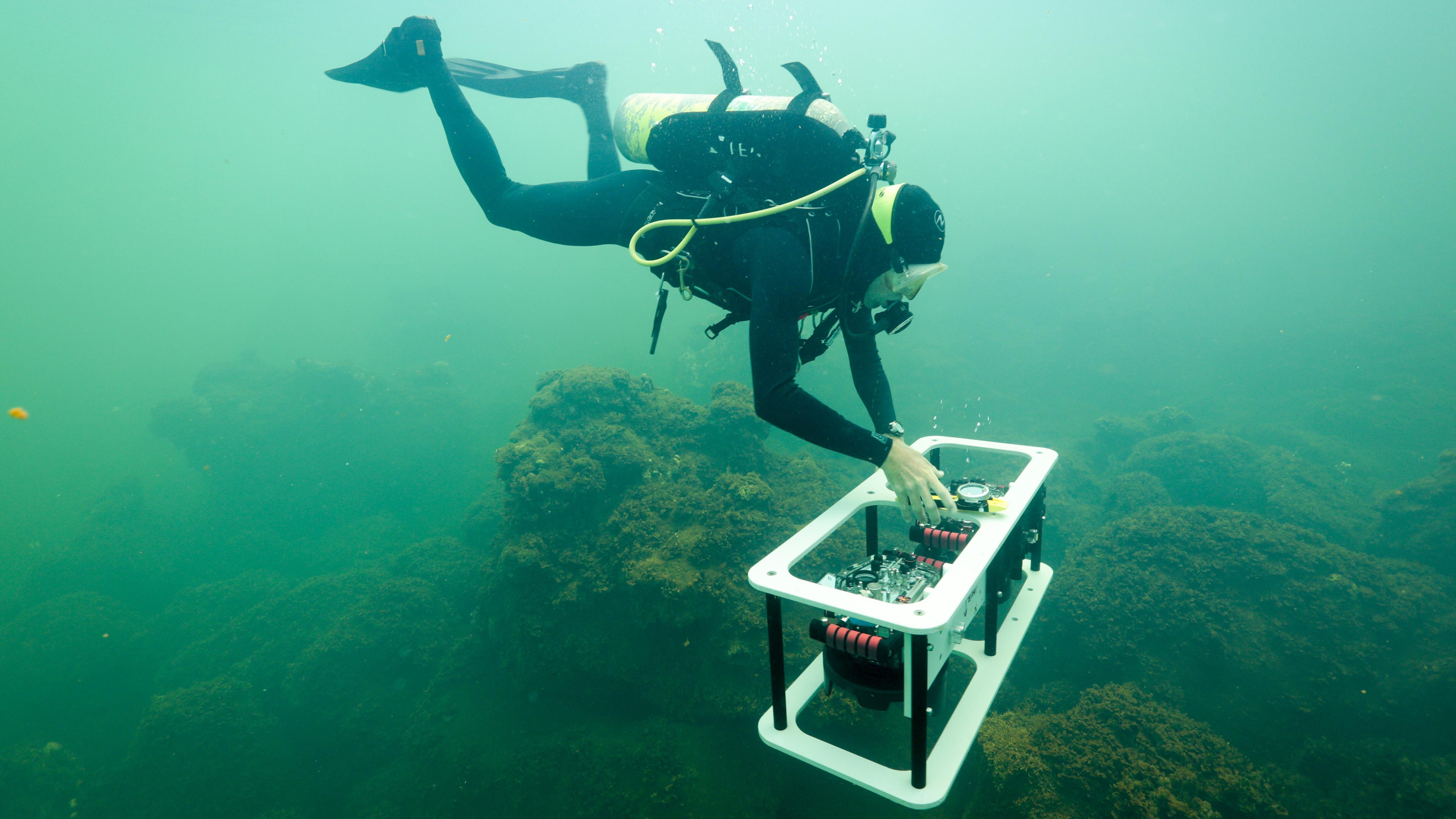
Stephani Gordon/Open Boat Films
To accomplish the task of creating a high-resolution mosaic image map of the vent, a diver swims over the area with a dual-camera array (diver Clint Edwards.)
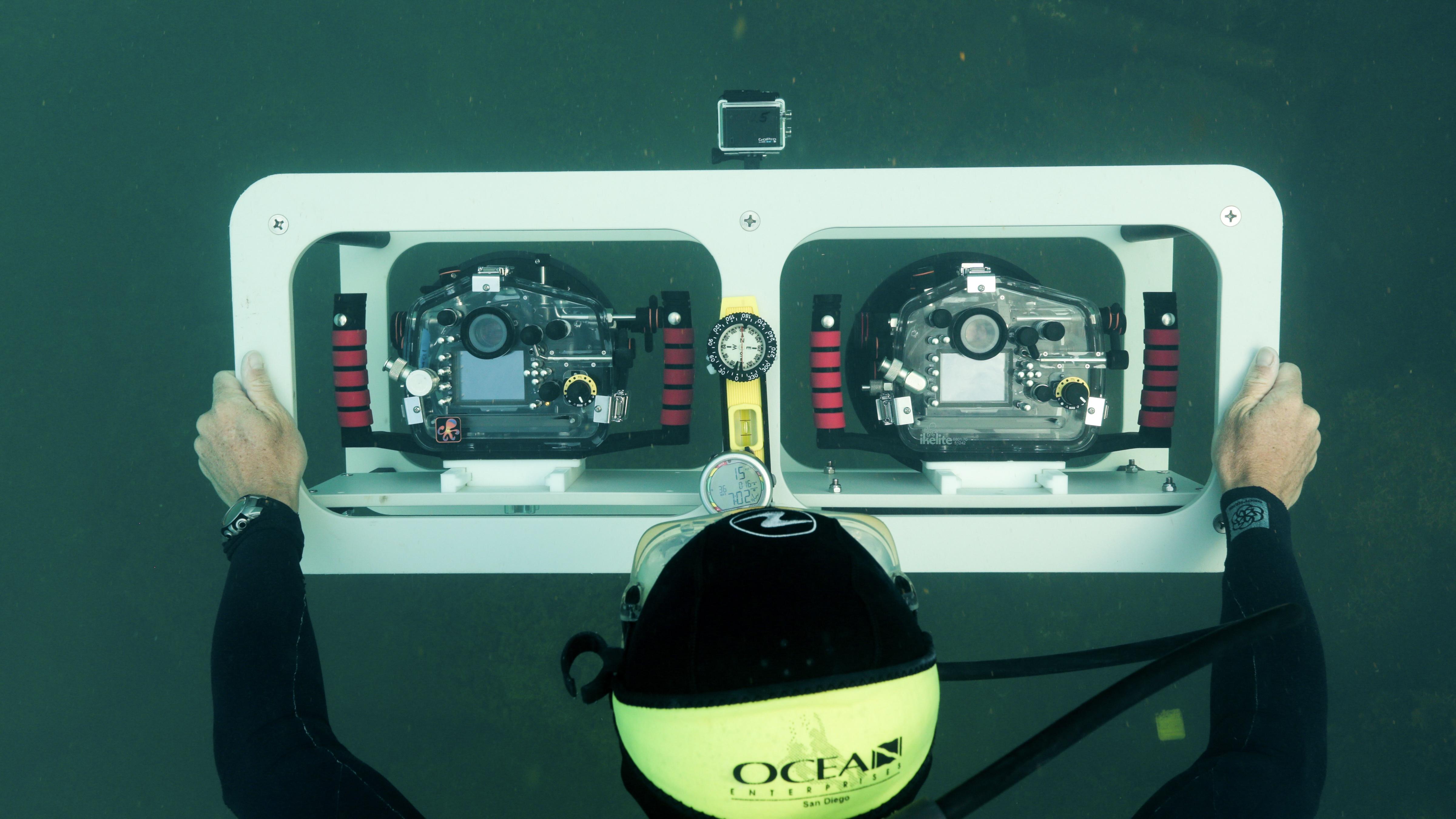
Stephani Gordon/Open Boat Films
Birdseye view of the dual-camera array used to make high-resolution, fine scale mosaics of the reef and vent habitats (diver Clint Edwards, Scripps Institution of Oceanography.)
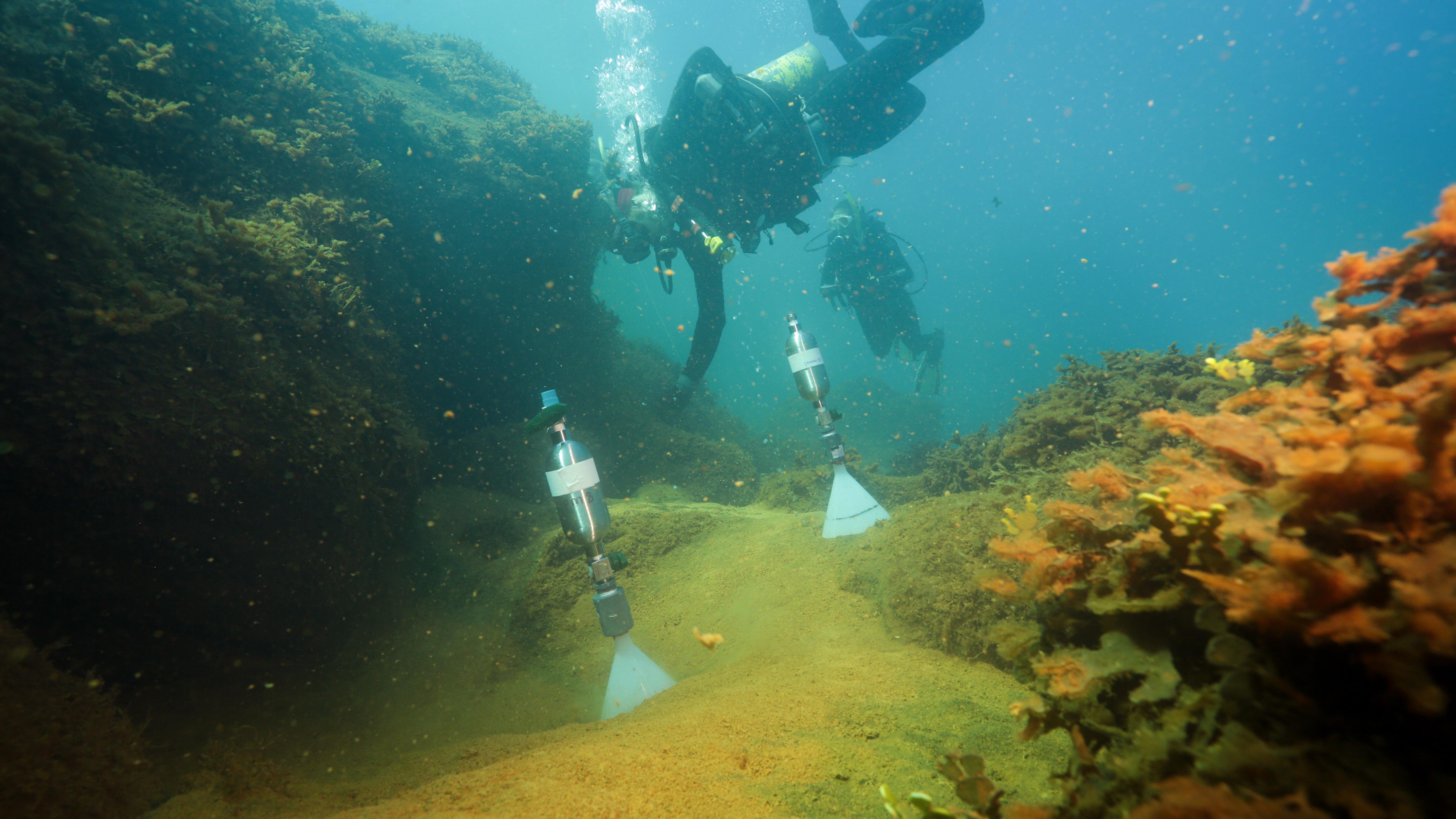
Stephani Gordon/Open Boat Films
Research divers collect vent bubbles for gas analysis (NOAA divers: Noah Pomeroy and Kerry Reardon.)
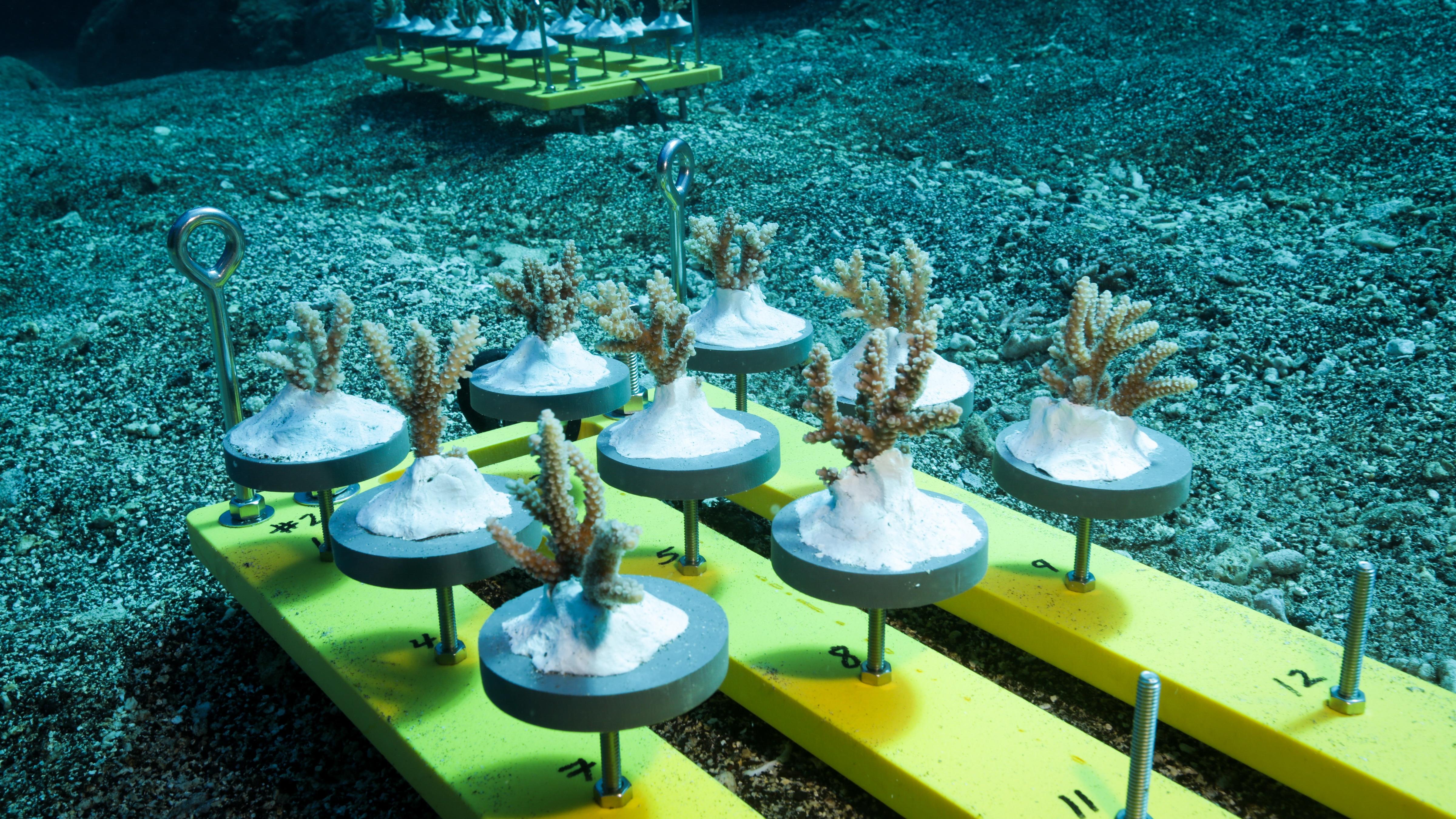
Stephani Gordon/Open Boat Films
Trays of coral transplants were used in an experiment to compare coral health at sites along a gradient of increasing acidity.
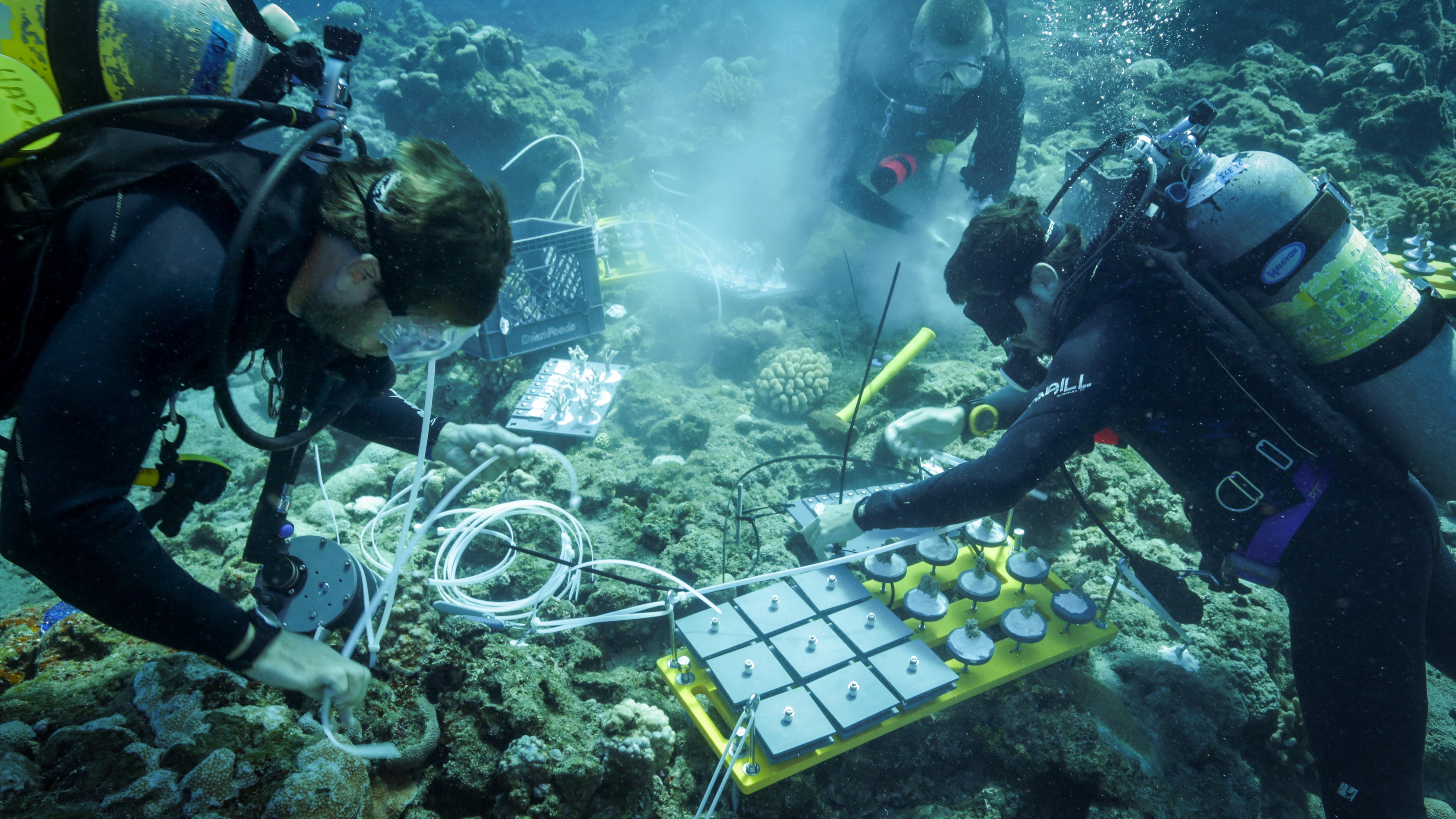
Stephani Gordon/Open Boat Films
A team of research divers installs coral transplants at the control site where vent fluids and gases should be diluted enough to not have a noticeable impact.
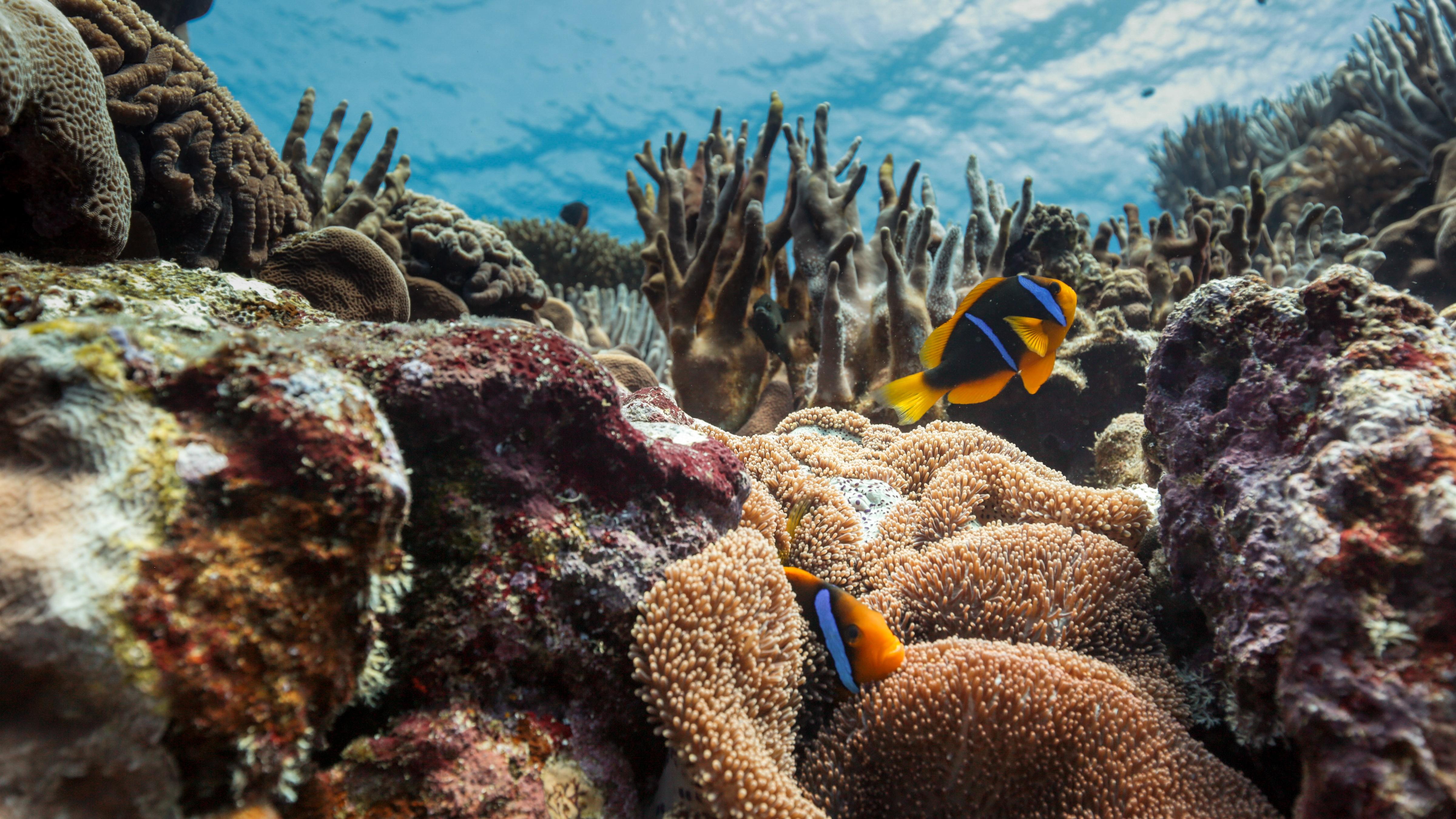
Stephani Gordon/Open Boat Films
Clownfish in an anemone on the reef at Maug.

Stephani Gordon/Open Boat Films
Scientist Emily Donham chisels off a small piece of coralline red algae, another key component (along with coral) for reef building.
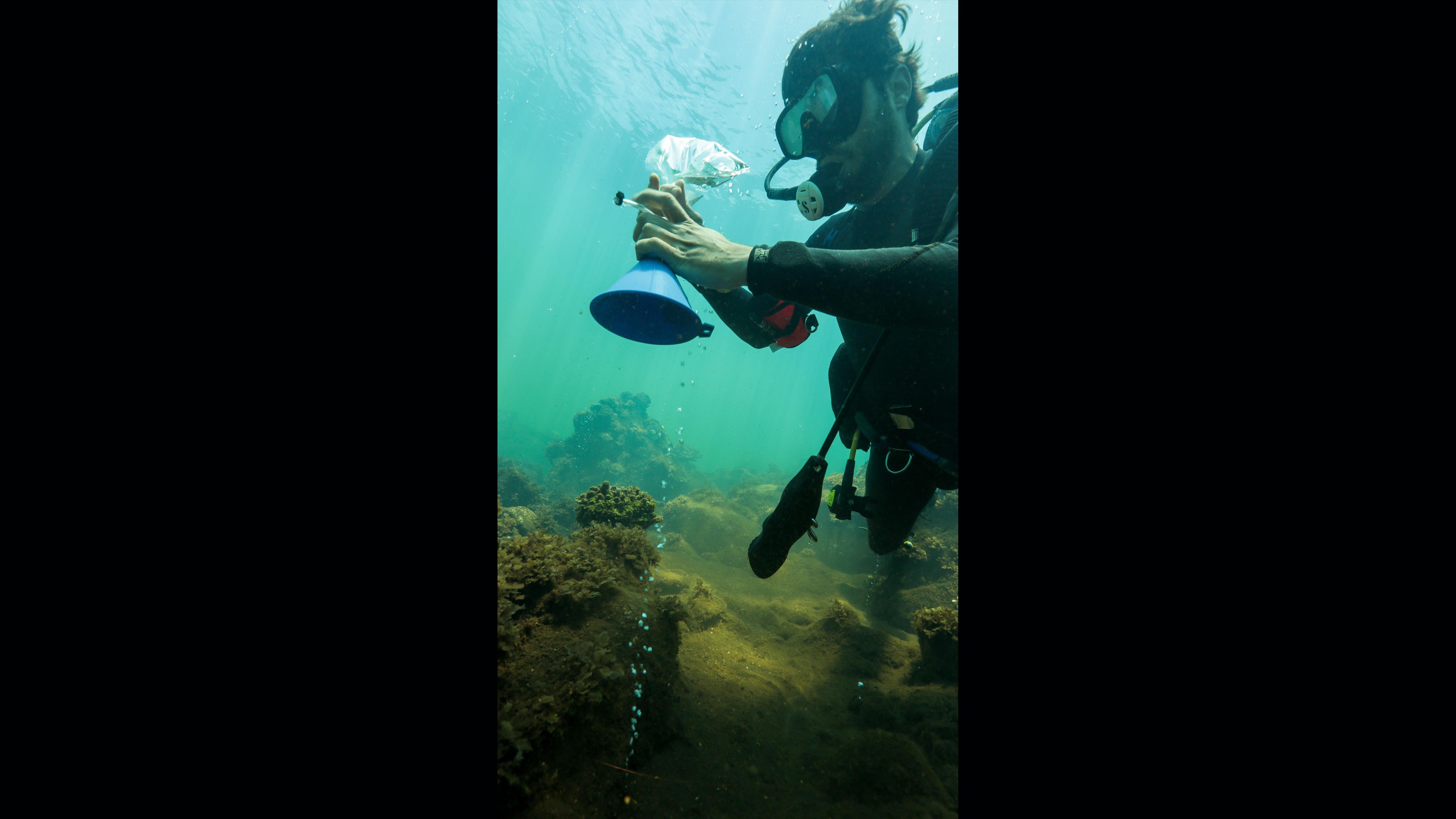
Stephani Gordon/Open Boat Films
Another method of bubble collection for gas analysis involves capturing bubbles as they rise towards the surface (diver Ian Enochs.)
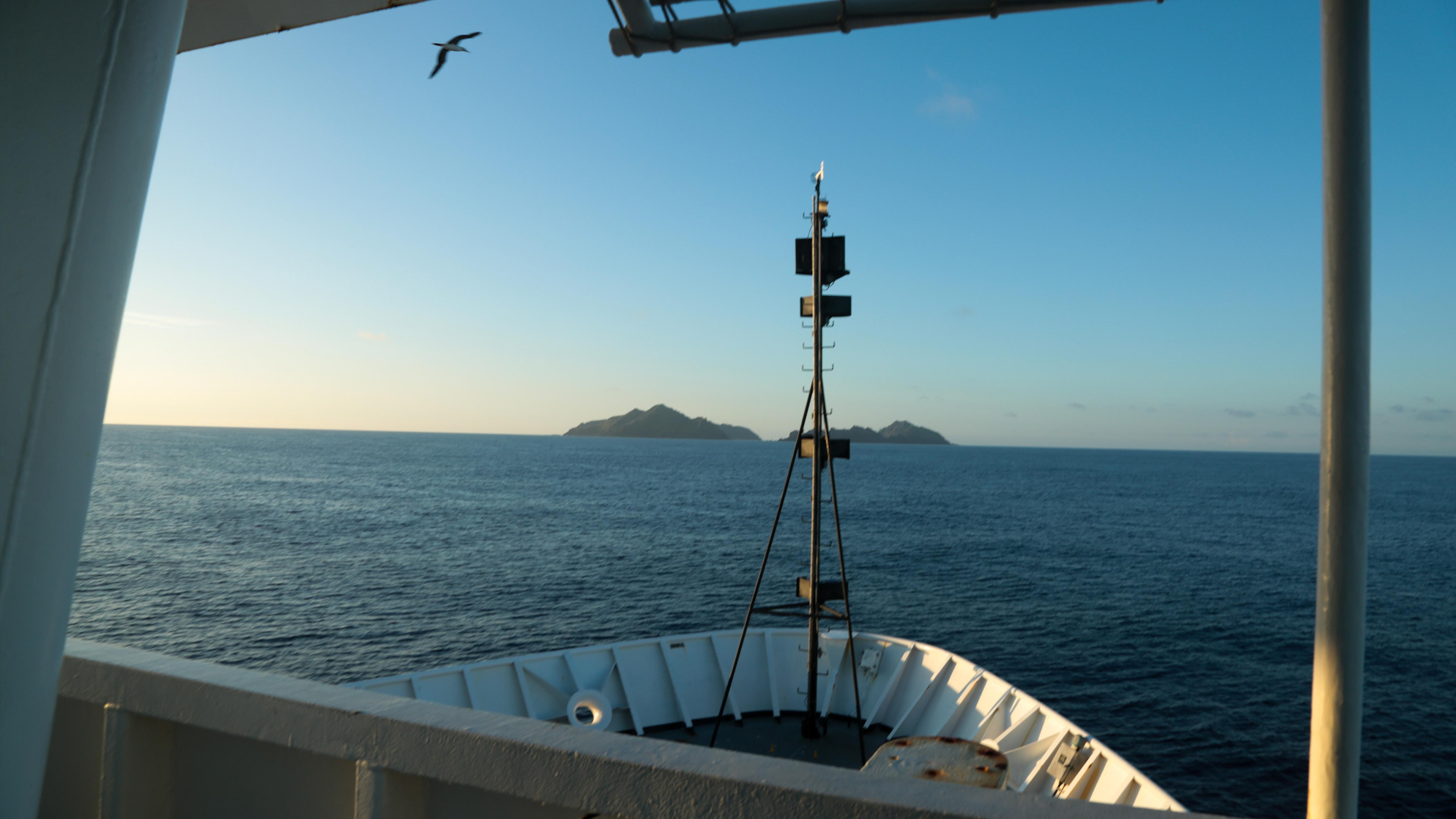
Stephani Gordon/Open Boat Films
The three islands of Maug are visible off the bow of the NOAA Ship Hi’ialakai as the ship approaches the caldera.
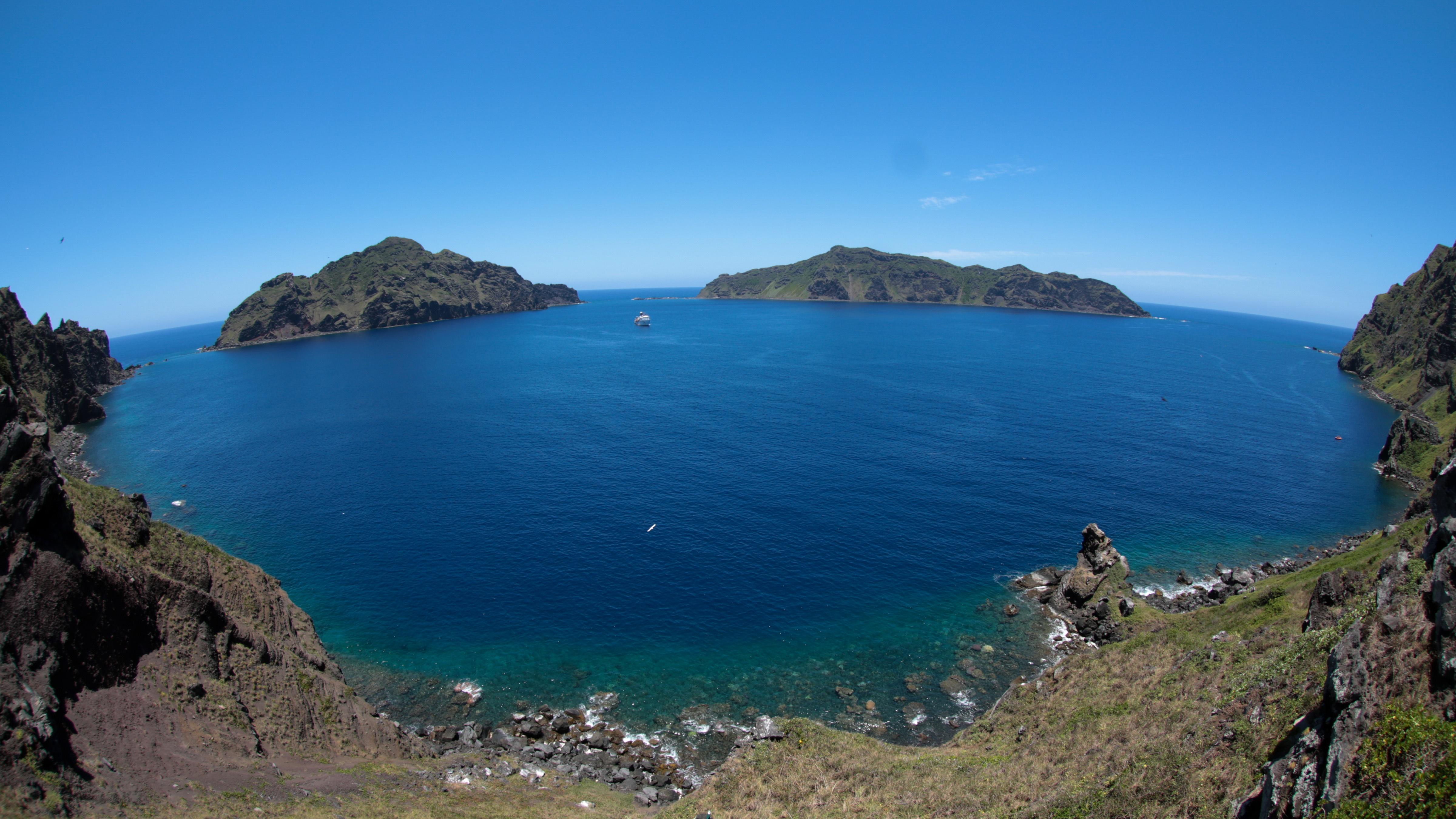
Stephani Gordon/Open Boat Films
After obtaining special permission from the CNMI government, filmmaker Stephani Gordon scaled the ridge of the west island for a shot of the caldera from the ridgeline.
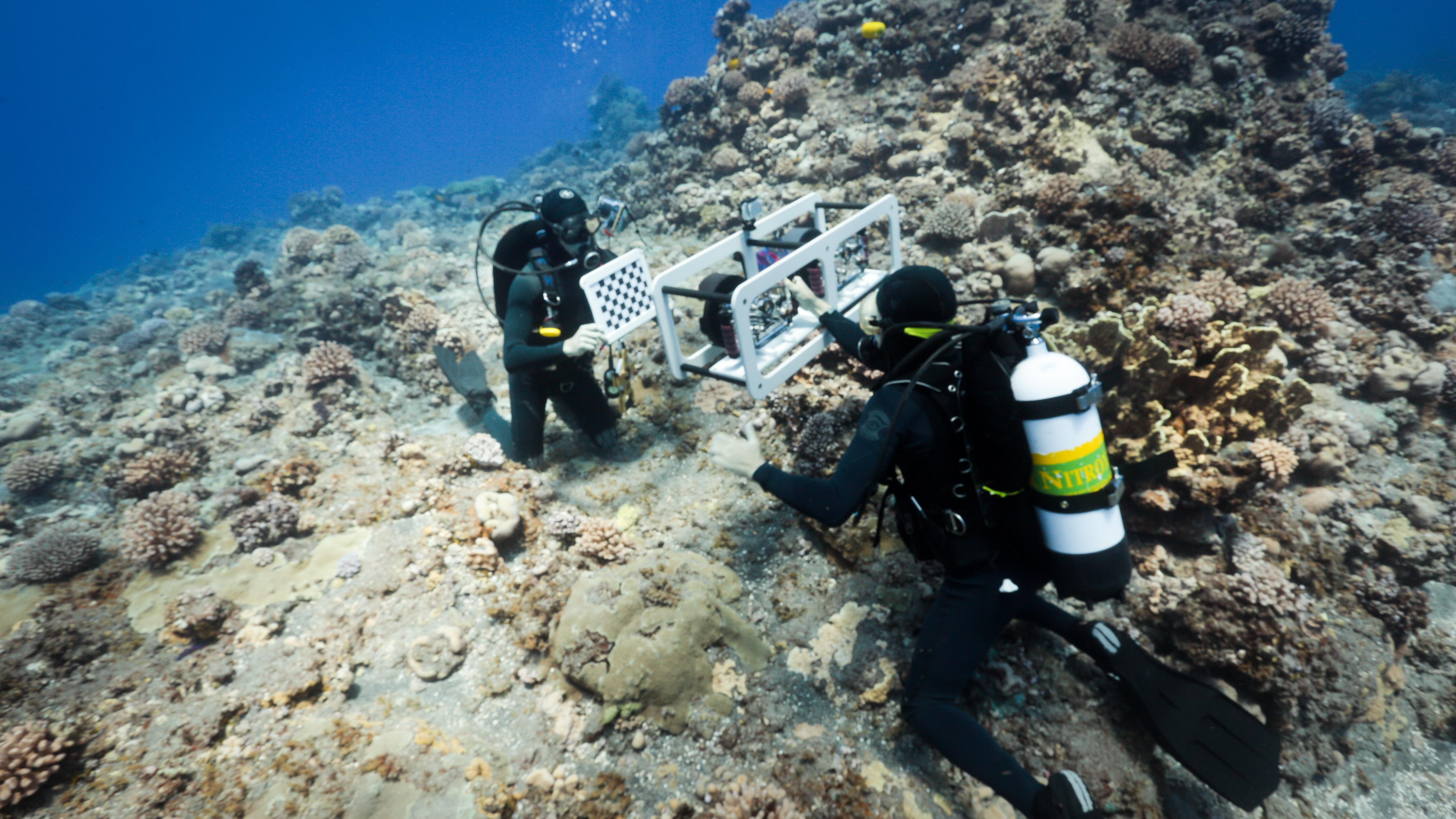
Stephani Gordon/Open Boat Films
Divers calibrate the dual high-res camera array before swimming it over the reef to create an image mosaic and map of the coral habitat (divers Mike Fox and Clint Edwards.)

Stephani Gordon/Open Boat Films
A science diver swims with a dual-camera array over the reef to create a high resolution map and image mosaic of the healthy reef habitat at Maug (diver Clint Edwards.)
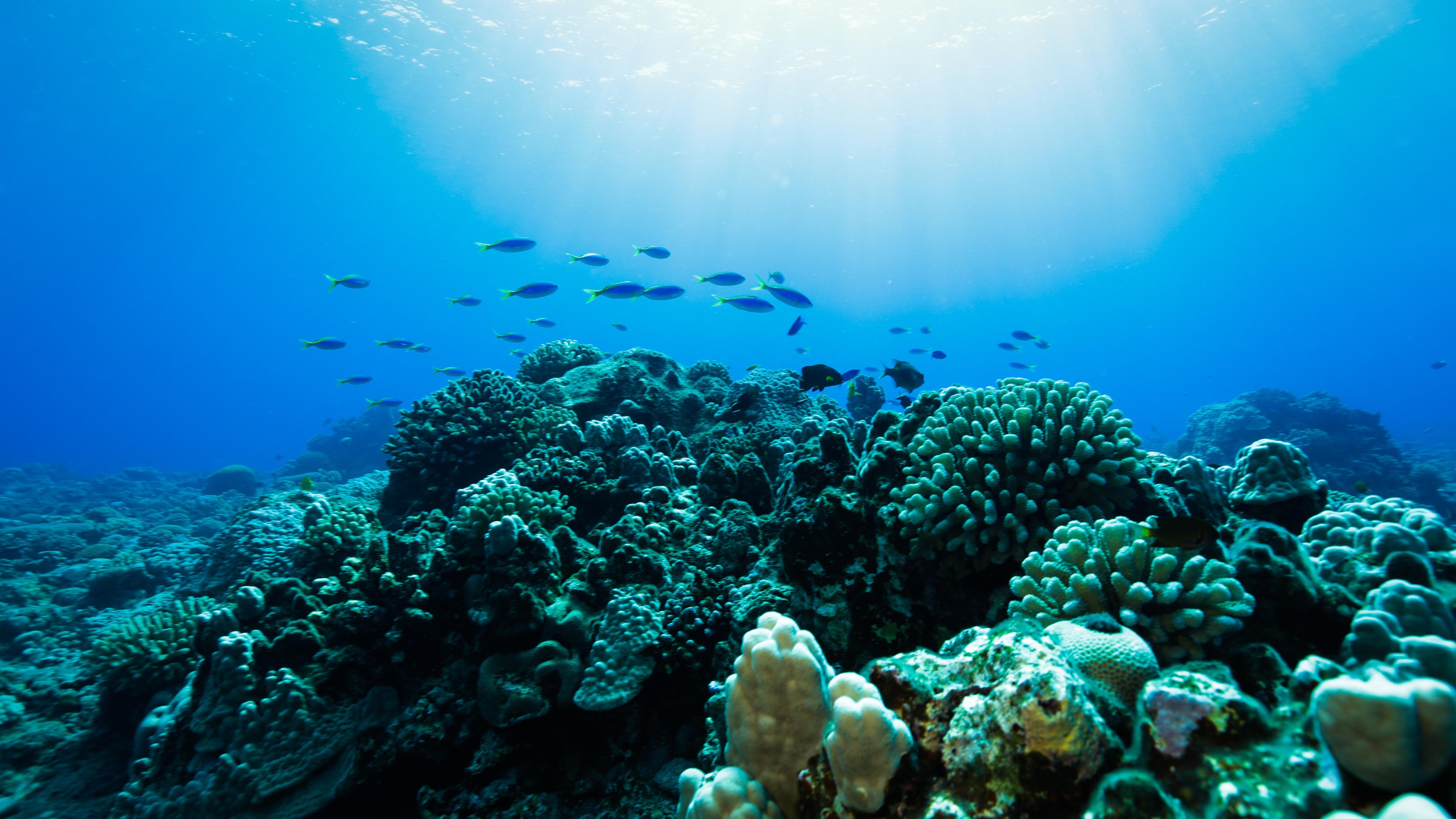
Stephani Gordon/Open Boat Films
A school of fusiliers swims over the forereef habitat at Maug.
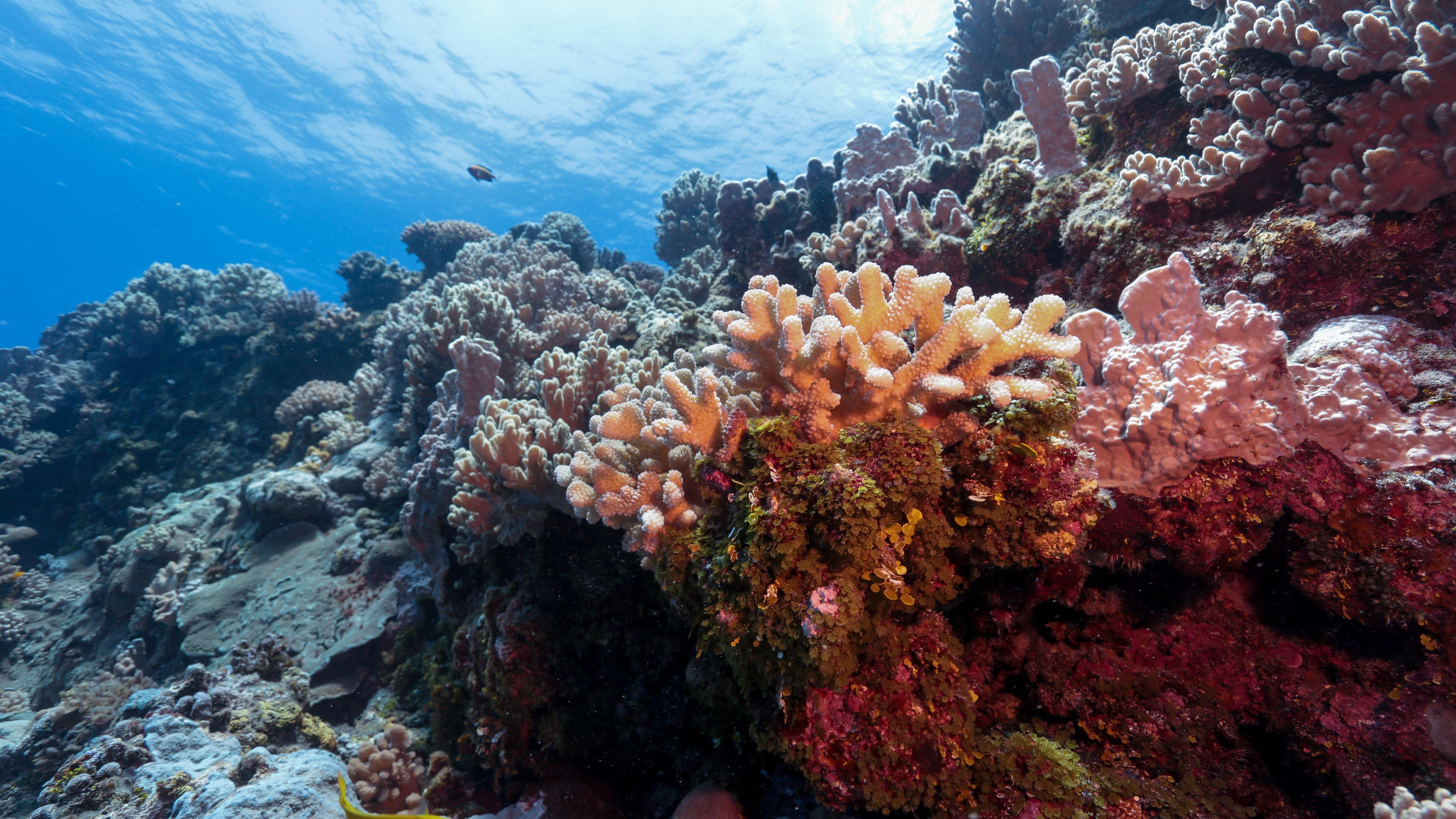
Stephani Gordon/Open Boat Films
A mix of hard coral, soft coral, calcareous green algae, and coralline red algae all contribute to the reef structure of healthy, robust reef habitat at Maug.
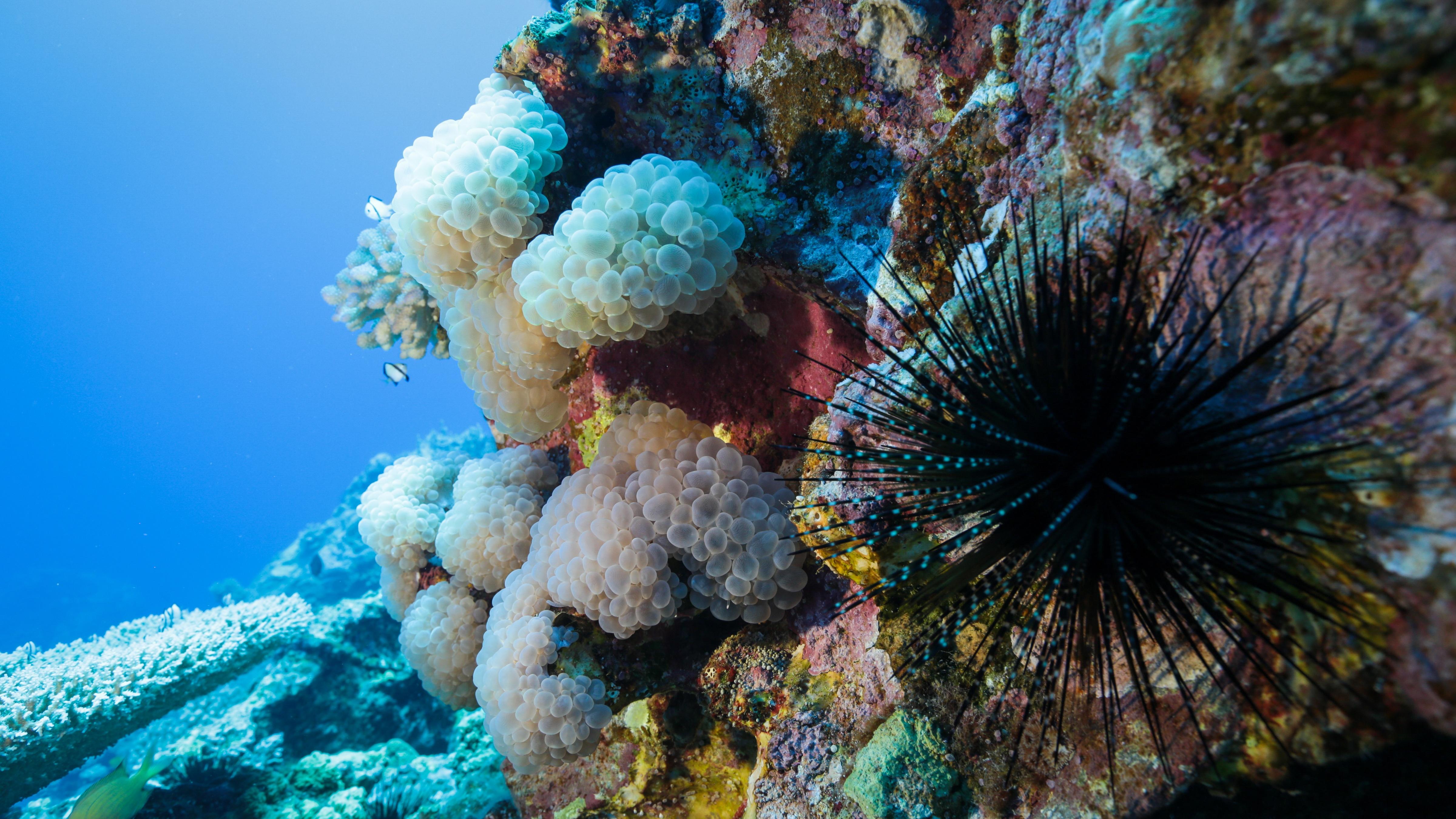
Stephani Gordon/Open Boat Films
This is 35m deep on the pinnacle thatrises up in the center of the caldera, with bubble coral, a long-spined sea urchin, and Dascyllus damselfish in the background.
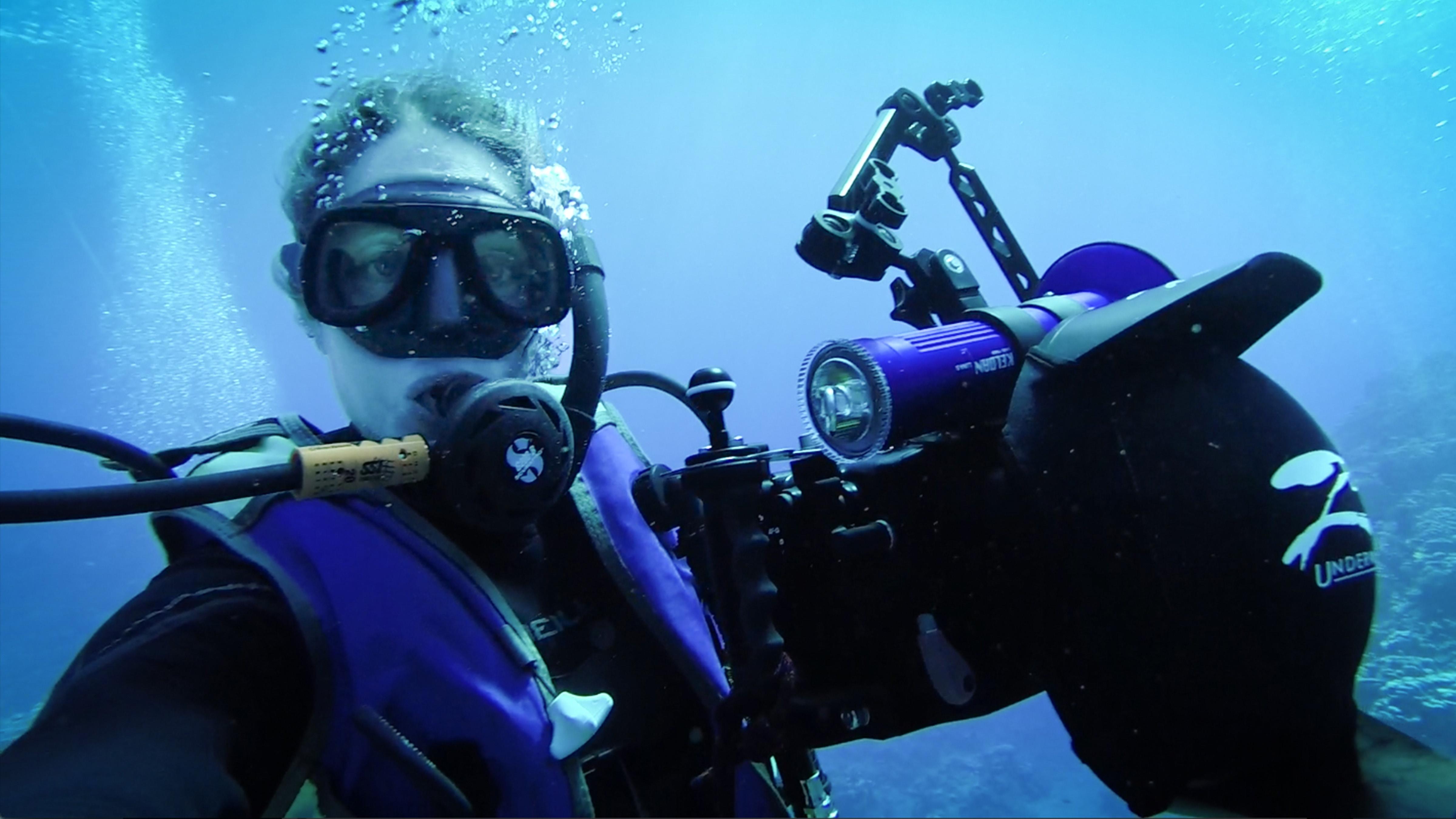
Stephani Gordon/Open Boat Films
Stephani Gordon with her underwater camera kit at Maug.
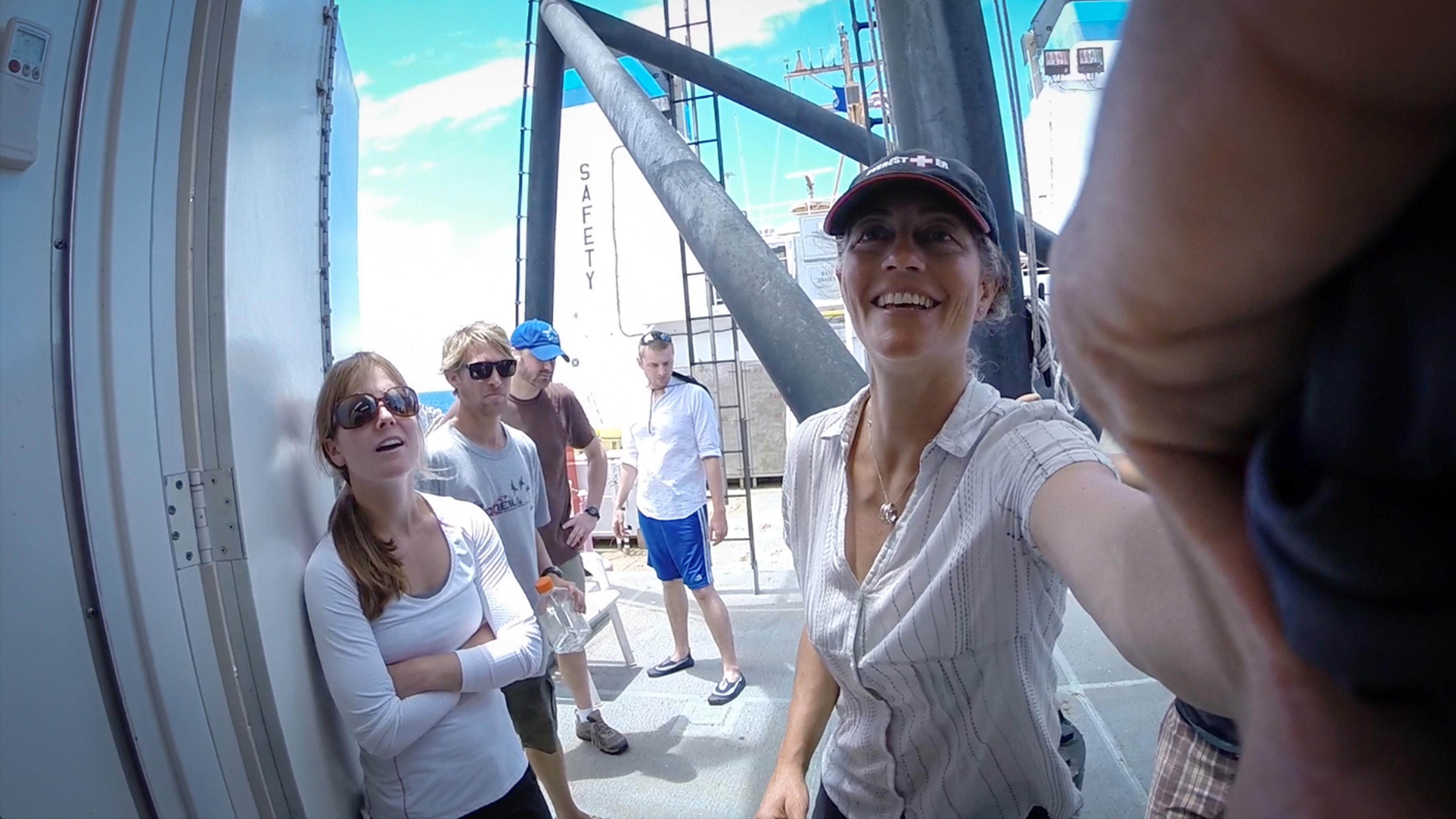
Stephani Gordon/Open Boat Films
Behind-the-scenes. Cinematographer Stephani Gordon passes a GoPro camera into the diver recompression chamber during a dive safety drill on the NOAA Ship Hi’ialakai.
Stephani Gordon of Open Boat Films films from a narrow ridge on the steep West Island of Maug (land-access permit issued by CNMI Department of Land and Natural Resources.)



























